You can search the website from the Home Page
Conflict
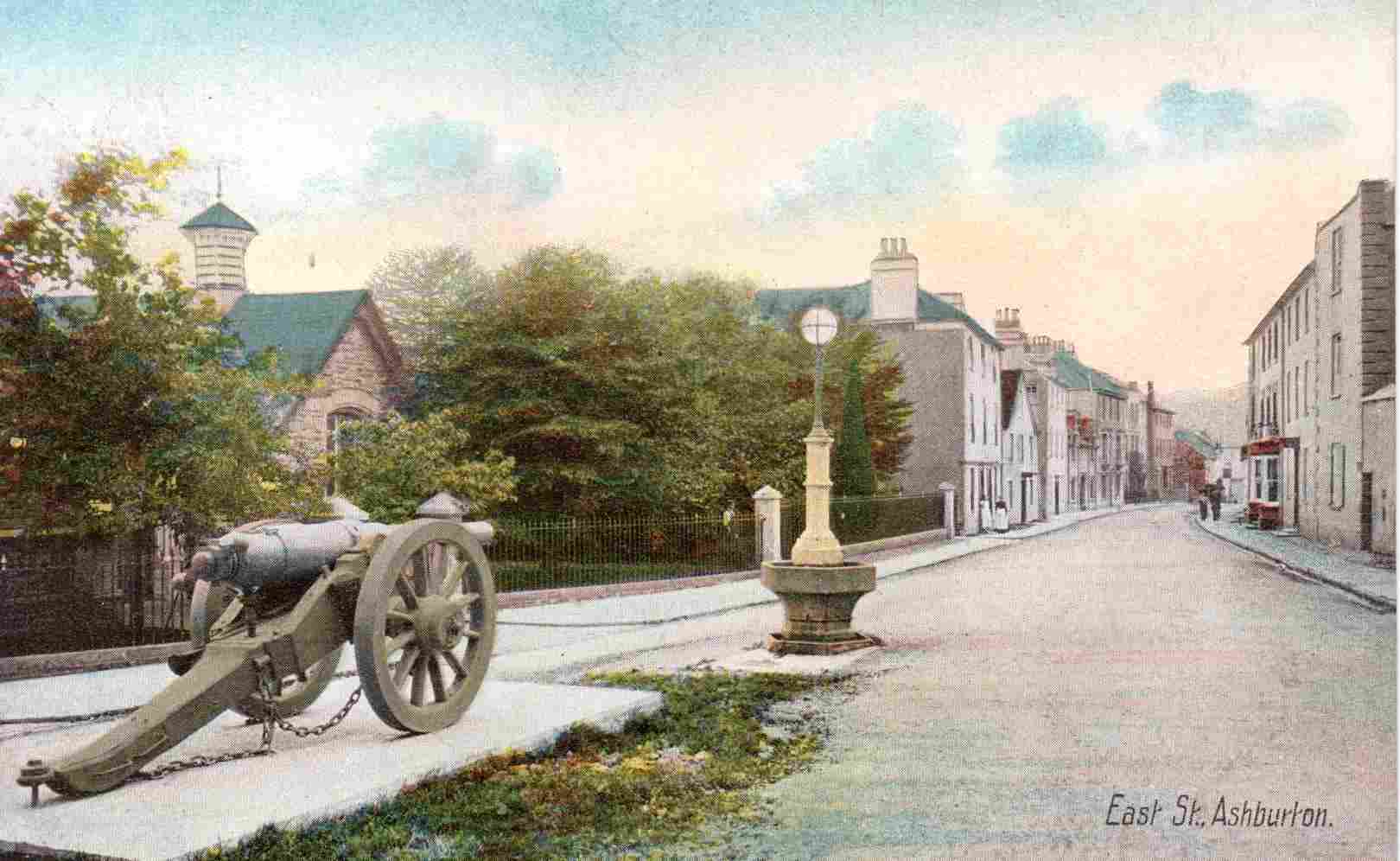
Above: A cannon presented to R E Tucker by his brother* Gen Sir Charles Tucker in 1904.
From my own collection
Western Times 20 April 1904 p4 col4
* I believe Sir Charles Tucker may in fact have been the uncle of R E Tucker. See the Tucker family in the sub-menu of the People and properties section
White's Directory of Devon, 1890, p4
More expenses from the Churchwardens' Accounts -
1543-44
20s
was given to nine men 'going to war with our lord the King.'* This took
the form of seven angelles, one riall and one half angell.**
ibid, p113
*The war was against France. See the review of
Henry VIII and Francis I: The Final Conflict, 1540-1547, by Dr. David Potter
on http://militaryhistoryblog.wordpress.com/tag/wars-of-henry-viii/ - Accessed 16-1-2014
**All these were gold coins. See the Royal Museums Greenwich website http://www.rmg.co.uk/file/5716 - Accessed 16-1-2014
1544-45
20s was given 'to men going to war.'
Ibid p115
1545-46
32s 2d was paid to provide clothing for three 'shouldyers'.
12s 4d was also noted down for swords and daggers, presumably an additional expense; 9s 4d was paid in cash.
Ibid p117
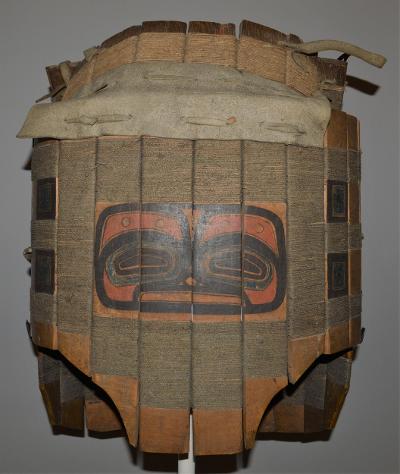
The 1600s
SPRIGGE, Joshua, ANGLIA REDIVIVA (1647)
Pages 331 to 335
An edited transcription of "A Journall of every dayes Martch of the ARMY under the command of his Excellency Sir THOMAS FAIRFAX; with the names of the Townes and Villages where the Head Quarters have been; the distance of miles,and how many nights the Quarters continued in each Towne or Village"
Jan 10 to Ashburton 6 miles 1 nights
(Sprigge says 1645, but the year then ran from late March - we should say it was 1646)
*******
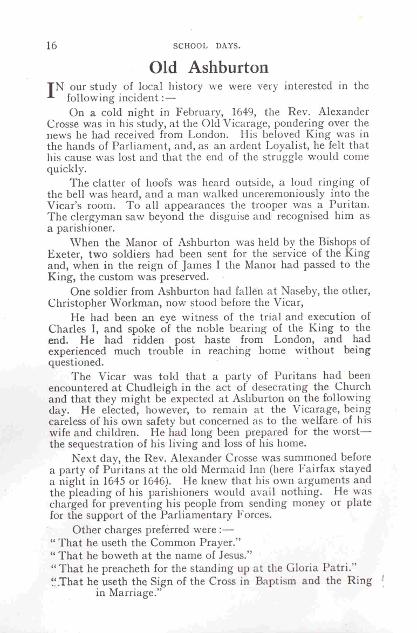
Above and below: Extracts from an unknown school magazine, concerning the Puritan advance upon Ashburton. The sources for the information are unknown, but it makes a good story.
Many thanks to Jeremy Hatch for this document.
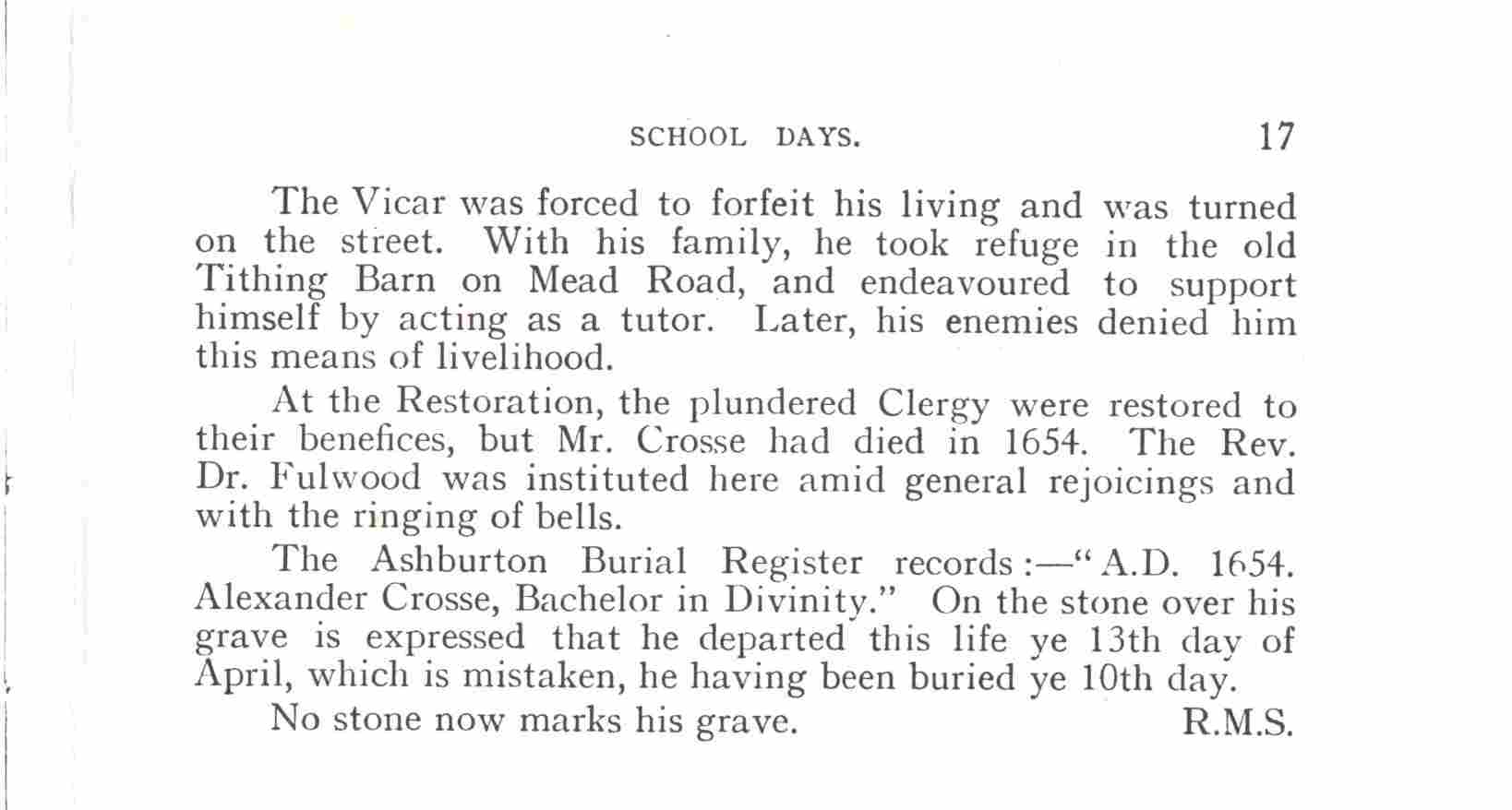
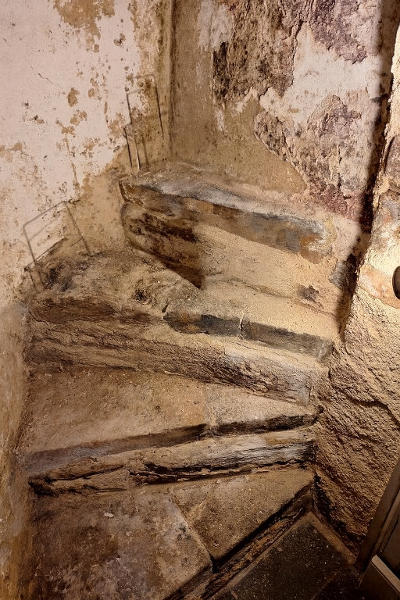
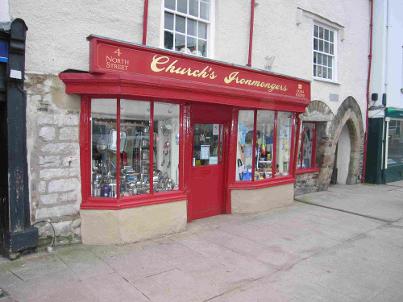
Charles Worthy, vicar and historian, linked the two together - in 1874 he said that the old Mermaid Inn was currently occupied by a baker called Mr Gregory.
Exeter and Plymouth Gazette 23 January 1874, p3 col3
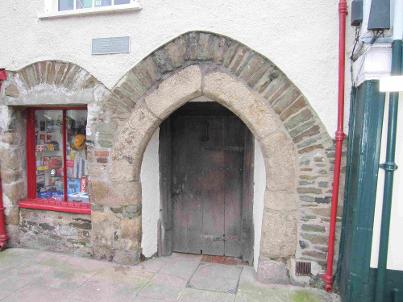
My own photographs 2013
Exeter and Plymouth Gazette 4 June 1859 p9 col5
Exeter and Plymouth Gazette 5 April 1861 p7 col2
In 1990 builders were carrying rubbish in a bag whilst renovating the Royal Oak Inn in the town. A piece of glass cut open the bag, and a musket ball fell out.
The debris was then searched, and amongst other finds were: several small grey military tunic buttons
an old leather double buckle military belt
four musket balls
three clay pipe bowls, one with a military insignia
Advertiser/Post 1 June 1990, p22 col 1-2
*******
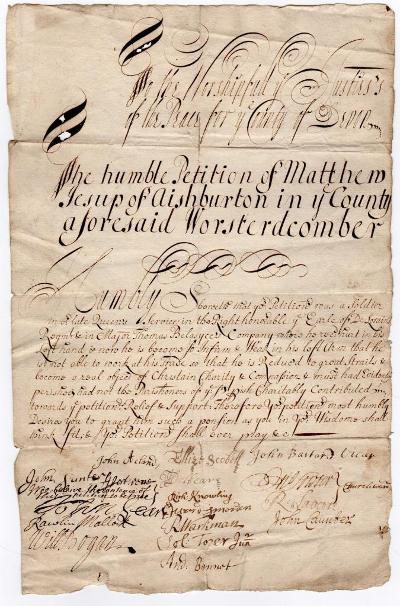
Sold privately, not in my possession - many thanks to both the vendor and buyer for permission to use the image.
Addressed to the Worshipful the Justiss's of the Peace for ye County of Devon, it was 'the humble Petition of Matthew Jesup of Aishburton in ye County aforesaid Worsterdcomber. He had been a 'soldier in the late Queen's service in the right honorable ye Earle of De Lorain's Regiment in Major Thomas Belasycers Company' and had hurt his left hand; 'now he is become so infirm and weak in his left arm that he is not able to work at his trade so that he is reduced to great straits and become a real object of Christian Charity and Compassion and must have evidently perished had not the parishoners of [the aforesaid parish] charitably contributed towards ye petitioners Relief and Support. Therefore ye petitioners most humbly desire you to grant him such a pension as you in your wisdom shall think fit..'
A Mathewe Jessop the son of Jacob was baptised in February 1658/1659
(It was still 1658 until March 24th according to the Julian calendar then used)
Parish records
Parish records
*The affidavit was to confirm that the corpse had been wrapped in wool - a meaure to assist the wool trade. Otherwise fines had to be paid.
The Statutes at Large, from the Twelfth year of Charles II to the Last year of James II, Danby Pickering, vol8 Cambridge 1763, p420
A transcription of maimed soldiers, predominantly civil war casualties, from the Devon Quarter Sessions is available on Genuki at http://www.genuki.org.uk/big/eng/DEV/CourtRecords/QS128 - Accessed 07-02-2018
Ten are from Ashburton.
*******
The 1700s/1800s
'Ashburton, Feb 5th, 1779.
Sir - I have received your letter, and am very anxious that the steps you are taking, and those I am myself about to adopt, may succeed in causing you to remain in your own country and in sending me back to mine. I have written to Messrs. Peter Thellusson, in London, to assist you with their good offices; I have also had the honour to write to Lord Shelburne, and have had my request to him seconded by Capt. Cosby, serving in the squadron of Admiral Keppel, and who, I am informed, is in intimate aquaintance of the former. I request you to communicate with Lord Shelburne, as well as with Messrs. P. Thellusson and Company, who cannot fail to add much weight to our just solicitations.
I have the honour to be, with perfect consideration,
Your servant,
Mons. Lefer de Chantelon.'
The United Service Journal and Naval and Military Magazine, London, 1830, p32
July 1779 buried Jean Esgurey or Esqurey a French prisoner on parole
Parish records
Aug 1780 Josef Augustin Gonsales a Spanish prisoner on parole
June 1782 Gerard Witmont a Dutch prisoner
Transcription by Mr. and Mrs. Hatch. Thanks to Jeremy Hatch for providing these.
*******
The
National Archives holds registers of French prisoners of war on parole
1794-98 at Ashburton, Bodmin, Callington, Tavistock and Tiverton
Ref ADM 103/601
http://discovery.nationalarchives.gov.uk
*******
'The second day they are paroled and sent to Ashburton, 24 miles from Plymouth; they must pay their own expenses to get there. While they are there they must pay 1s 3d per diem, or 8s 6d sterling per week. Beef is 10d per pound, bread in proportion, and every other necessary equally dear....'
Extract
from a memorial addressed to the Secretary of State, by James Orm,
Joseph B Cook, Thomas Humphries and others, masters of American vessels,
who were prisoners of war in England, and returned to the United States
in the cartel ship Robinson Potter
see http://www.blogof1812.com/ entry for November 12th 1812
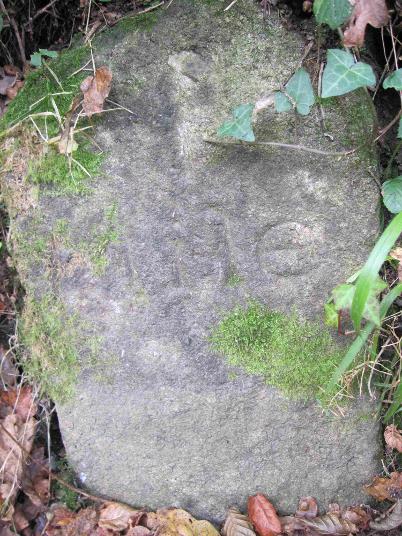
'The prisoner is allowed to walk within one mile of the town centre but he must not enter open land or road.....'
From
'Rules to which all prisoners of war on parole must observe'
in Ashburton Museum, reproduced in Prisoners of War in the Dartmoor
Towns, Trevor James, Orchard Publications, 2000, p 17
Above right: Parole stone, one mile from the town.
My own photograph 2013
*******
'Aug 8th 1795
[Ashburton] was full of French prisoners, who were there on their
parole. There were 300 of them in the town, and of course it appeared
more like a French than an English town. Most of them appreared strong
and active men, and some had very interesting countenances. They were
very well dressed, but that is easily accounted for, as our government
allow the officers half a guinea, and the men 5s 3d per week, for their
maintenance. We spoke to one little boy, (of which there appeared a
great number) who was selling sticks (it being market day) and who told
us they had all been taken on 1st of June, and that he was on board the
Juste*. When we asked him if he desired to return to France he answered,
"Me have one father and mother, and brother and sister, and me wish to
see them again." He appeared to have no idea of the Revolution,
Convention **, etc.'
Journal of a Tour around the Southern Coasts of England, John Henry Manners, 5th Duke of Rutland, London, 1805, p100ff
*
The Juste, originally Le Deux Frères, was captured by the British after
engaging the Queen Charlotte on the 'Glorious First of June' 1794.
http://threedecks.org/index.php?display_type=show_ship&id=1947 - Accessed 17-3-2016
Colburn's United Service Magazine and Naval and Military Journal, 1843, part 2, London, p176 - Accessed 17-3-2016
** The French Revolution began in 1789. The Convention Nationale governed France from 1792 until 1795.
http://www.britannica.com/topic/National-Convention
In 1795 William Sunter, a magistrate of Ashburton, sent a letter to Robert Mackreth, the town's MP.
He said that 300 French prisoners were on parole in Ashburton, and that it was rumoured that the number would increase to 500. He wanted the MP to approach the Admiralty and suggest that some prisoners be moved to towns further from the coast.
There
were, he maintained, insufficient provisions for the inhabitants as it
was, with no cattle fit for slaughter; he had intervened at one market
so that the soldiery and poor could buy potatoes at a reduced price, and
he was then threatened with his life if he did it again. Some of the principal
inhabitants had decided to buy foreign corn at Plymouth and had sent 2
overseers of the poor to buy some. A cartel of millers prevented them
buying any at all.
National Archives HO 42/34/160 Folios 361-362.
http://discovery.nationalarchives.gov.uk - Accessed 11-1-2014
In 1854 the Western Times reported that the figurehead
of a French ship could be found in the north aisle of St. Andrew's
Church. It was, said the article, from the French frigate La Virginie,
which had been captained by M Bergeret. Lord Exmouth had taken the ship
on 20th April 1796, and Captain Bergeret had been a parole prisoner at
Ashburton.
Western Times 13 May 1854 p7 col4
Memorials of Old Devonshre, ed F J Snell, MA, London 1904, p261
Commissions in the Ashburton Volunteer Association
Walter Palk, Captain
William Sunter, Gent, 1st Lieutenant
Thomas Soper, Gent, 2nd Lieutenant
Joseph Sunter, Gent, Ensign
London Gazette Issue 15039 7 July 1798, p4' [died] At Ashburton, Devon, Richard Hill Esq., captain in his majesty's navy - he early displayed his nautical abilities in an engagement off the Dogger Bank in the last war, when the captain of the Princess Amelia, of which he was first lieutenant, being killed, he took the command, and after a very well fought action, succeeded in defeating his Dutch opponent. In the year 1795 he was appointed agent to the Transport Service for the West Indies, and when the large fleet of transports, under Sir Hugh Cloberry Christian's command, after experiencing the most severe gales in the channel, were parted from the admiral in a storm, Captain Hill took the superintendance of nearly the whole fleet, except a few scattered ships, and conducted them safely to Barbadoes, for which he received the thanks of the merchants and inhabitants of that island. During his voyages to the West Indies he had several violent attacks of the yellow fever, which materially impaired his constitution. After his return he was appointed to the Irish service, and whilst he was stationed in the Bay of Dublin was presented with the honour of the freedom of that city, and received its thanks for his hospitality and attention to the interest of the metropolis. His arduous and unwearied exertions for the benefit of his country (which were prompted by the most loyal attachment to his Sovereign) during his continuance on the Irish station, and in conducting French prisoners from that kingdom to different English ports, in the course of which he underwent the most harrassing fatigue, in all the severity of the last winter, have been considered by the faculty as the principal cause of the complaints which have terminated his existence. His last appointment was as Regulating Captain at Jersey, and his physicians imagined the change of air might conduce to his recovery; but his disorders, of which the seeds had been sown in the West Indies, and matured by his illness in the Irish employ, increased so rapidly that he lived but a few days after he was brought to Ashburton.'
The Monthly Magazfine for 1799, July - December, vol 8, London, 1800, p673. Available to read free through Google Books - Accessed 9-12-2015
Amongst Ashburton wills in the Prerogative Court of Canterbury (PCC) - Richard Hill, captain in the Royal Navy and now commander of his Majesty's store ship Dromedary, August 1799
*******
On
the 3rd September 1801 the Exeter Flying Post reported that a Serjeant
and 12 men from the 29th Regiment of Foot had left Plymouth with a 'park
of artillery.' (guns, ammunition, carriages etc.) in case of invasion.
They had come to Ashburton, the town being half way between Plymouth and
Exeter.
Exeter Flying Post 3 September 1801, p4 col4
Henry Pinson Tozer, Captain
Charles Kendall, Gent, 1st Lieutenant
London Gazette Issue 15418 17 October 1801, p4
'As
we approached the environs of Ashburton our curiosity was excited by
several parties of decent looking men whom we overtook, walking slowly
towards the town. From their conversing in a language which we did not
understand, we quickly discovered that they were foreigners, but to what
nation they belonged we were unable to determine....When we reached our
quarters, one of our first enquiries was, who these strangers (many
more of whom we saw in the town) might be? to which we received for
answer that they were Danes, who had been detained in England at the
time of the Copenhagen Expedition, and had been sent as prisoners to
Ashburton.'
The Topographical works of the Rev. Richard Warner, 1802, Vol3 A tour through Cornwall, p35 Freely available through Google books https://books.google.co.uk/ - Accessed 16-1-2015
Memorials of Old Devonshre, ed F J Snell, MA, London 1904, p260
'It was in 1803 that the Haytor Regiment was formed ... [Ashburton were] now again formed and became a company in the Haytor Regiment, under Captain Tozer.'
ibid p 261
*******
21st October 1805 - The Battle of Trafalgar.
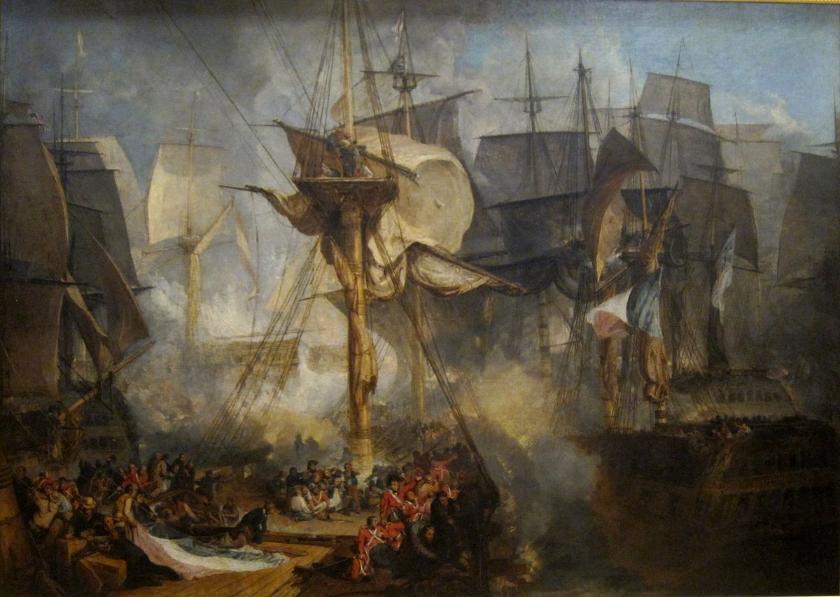
John Ball aged 15
William Ferris aged 17
John Murch aged 19
John Murch aged 40
Robert Pengalley aged 27
William Pengalley aged 24
Robert Smerdon aged 20
Richard Webber aged 50
Robert Whiteway aged 38
Andrew Wickham aged 30
http://www.nationalarchives.gov.uk/
1864 On the
anniversary of the Battle of Trafalgar Captain Rogers
of Waye House gave a dinner and tea to all the soldiers, sailors and
mariners of the borough. All had been involved in conflict of one sort
or another, and one of them had been wounded at Trafalgar itself, on
board The Belleisle.
Western Times 28 October 1864 p8 col3
For more on Capt. Rogers, see Ashburton and the East India Company
John
Murch aged 19 had entered the Gibraltar Hospital on October 24th, 1805
with wounded feet, so this seems the most likely candidate. John Murch
aged 40 was also on the Belleisle, as were the two Pengalleys - both
Robert and William had 'run to the Spaniards' in August, but had both
joined the Belleisle in Barcelona in September.
http://www.nationalarchives.gov.uk/
******
In 1807 Danish prisoners of war were held on two ships
- The Prince, and El firme. The masters and mates were due to go on
parole to Ashburton, Totnes, Tiverton, Okehampton (Devon) and Launceston
(Cornwall).
Morning Chronicle, 17 December 1807 p4 col1
Parish records
******
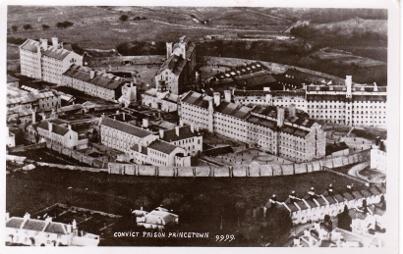
Above: Dartmoor Prison, originally constructed for prisoners of war
From my own collection
The conflicts with France and America caused a great logistical problem on what to do with the prisoners of war. Originally the French prisoners were kept in decommissioned ships, or hulks. The ships were still afloat, usually in harbours, which led to fears in Devon about them being so near the Plymouth Royal Naval Dockyard. The welfare of the prisoners was also a concern.
In 1806 construction began on a building on Dartmoor to house these prisoners.
The prison was finished in 1809, taking first of all French prisoners of war, followed by Americans in 1812
http://www.dartmoor-prison.co.uk/history_of_dartmoor_prison.php - Accessed 14-01-2016
*******
The Battle of Salamanca, 22nd July 1812. 'The 11th [North Devonshire Regiment], as leading its brigade, was pushed forward under a heavy fire, and was soon engaged in a desperate struggle, and drove the French from their ground. At the close of the action a French division made a very determined stand to recover the retreat. The 6th British Division again attacked, led by the 11th, and as the darkness came on overpowered the French, who fled in confusion. They lost 16 officers, 325 men; only 4 officers and 67 men came out unwounded. The 11th captured a battery of guns and a green standard without an eagle. The 122nd French Regiment, which was opposed to the 11th with two battalions, numbering 2,200 strong, the next day only mustered 200 men; they were mostly taken prisoners. Captain Lord Clinton, uncle of our late Lord Lieutenant, was despatched with the news direct from the field, and carried with him the green standard. He landed at Plymouth, and in a chaise and four rattled up the road to London. As he passed throught the towns on the way he exhibited the standard, and persons now living in Ashburton* remember seeing him pass through; he was at that time Lord of the Borough of Ashburton. The 11th earned the nickname of "The Bloody Eleventh" from the part it had taken in that terrible day.'
Memorials of Old Devonshre, ed F J Snell, MA, London 1904, p253
* The first edition of the book was 1862
*******
'We alighted at Ashburton, and hardly were seated, when the room was filled by Americans. This was a depot for captains and other officers of privateers, they crowded around us with anxious looks to hear the news, each had some distinct question to ask about their home, family and friends; but they all united in a desire to know particulars repecting the capture of the Chesapeake*. It was an interesting sight to observe a number of fine looking men, prisoners of war on parole, each with a countenance beaming with interest and intelligence, listening with eager attention to the detail of an event which they had but imperfectly understood; they would know the most minute particulars, and each man shook his head with a smiling look of approbation, when declaring, "I knew the Chesapeake must have been taken by surprize, not by a fair fight, yard arm and yard arm, broadside and broadside. We have lost no honour" said these hardy citizens, as they left the room.'
Travels in England, France, Spain, and the Barbary States in the years 1813-14 and 1815, Mordecai M Noah, Late Consul of the United States for the city and kingdom of Tunis, New York, London, 1819, p27
*The USS Chesapeake had been captured by HMS Shannon on June 1st 1813 http://militaryhistory.about.com/od/shipprofiles/p/War-Of-1812-Uss-Chesapeake.htm
*******
Andrew McDonald, a captain of land forces, was released from parole at Ashburton in 1814. He was allowed to return to the United States as long as he did not engage in any activity that contributed to hostilities between Britain and America. His safety was guaranteed provided he left England within 41 days, travelling to Dartmouth for a passage in the St Philip American cartel.
Document sold privately, not in my possession
*******
'[The cruise of the Argus] continued prosperous until she came in conflict with the British sloop-of-war Pelican...Early in the action Capt William Henry Allen was mortally wounded and taken below; shortly after the first Lieutenant William H Watson was severely wounded and taken to the wardroom. The command of the Argus then devolved on Lieutenant William Howard Allen; his conduct was cool, deliberate and such as received the admiration of the crew, and the approbation and praise of his superior officers. After fighting was useless, the Argus was surrendered to the Pelican, a perfect wreck. This was on the thirteenth of August 1813. Lieutenant Allen was taken to Ashburton, England, where he was detained eigtheenth months a prisoner of war; but he was exchanged before the close of the war, and returned in a cartel to Norfolk...'
Biographical Sketches of the Distinguished Men of Columbia County, William Raymond, Albany 1851, p46ff
*******
On the 21st November 1814 William Pottenger married Frances Broom at Ashburton
https://familysearch.org
According to Trevor James, William was an American Midshipman who had been on board the Argus. He was in Ashburton lock-up when his fellow shipmates were sent home in November 1814, and Trevor James speculates that this was because the parish feared there might be soon be a child to support.
James says that the couple eventually returned to William's home in Philadelphia.
Prisoners of War at Dartmoor, Trevor James, publ. Mcfarland and Co. Inc., 2013, p97ff
Obituary notices. 'In Hagerstown, Mid Lieut. William Pottinger, of the United States navy, aged 39. During the late war he was actively and usefully engaged in the navy, and an officer on board the brig Argus, in her sanguinary engagement and capture in the British channel, by the Pelican, a foeman of double force.'
The New-England magazine, vol 4, January 1833, p264
Jan 16th 1845, House of Representatives. 'Also, a petition of Frances Pottinger, of Hagerstown, in the State of Maryland, for a pension: which was referred to the Committee on Naval Affairs.'
Journal of the House of Representatives of the United States, the second session of the twenty eighth congress, Dec 2nd 1844, Washington, p215
*******
General Count Lobau and other officers were
taken prisoner at the Battle of Waterloo - they also were sent to
Ashburton on parole.
Hull Packet, 25 July 1815 p3 col2
R G Beasley Esq. to the American Prisoners of War, on parole at Ashburton.
Agency for American Prisoners of War, London 23rd March 1815
Gentlemen, I have to inform you that the Treaty of Peace, having been ratified by the President, the release of the prisoners of war will commence without delay.
Although I have not as yet received any instructions from our Government, I have engaged, and am fitting out four vessels, for their conveyance, to proceed to Plymouth to receive them, and shall use every despatch in sending them to the United States.
I am, etc. R G Beasley
British and Foreign State Papers, volume 3, p139
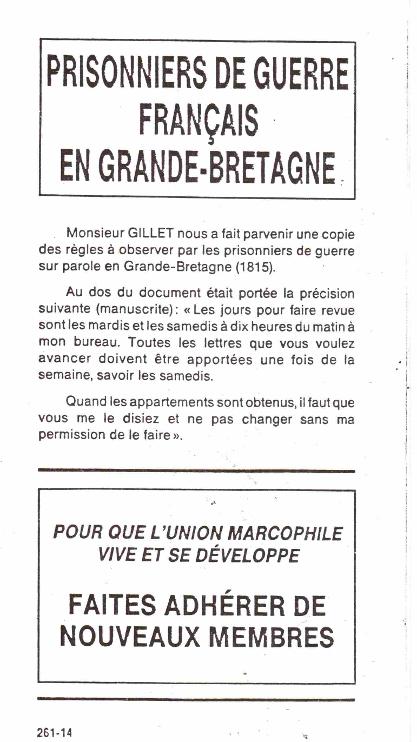
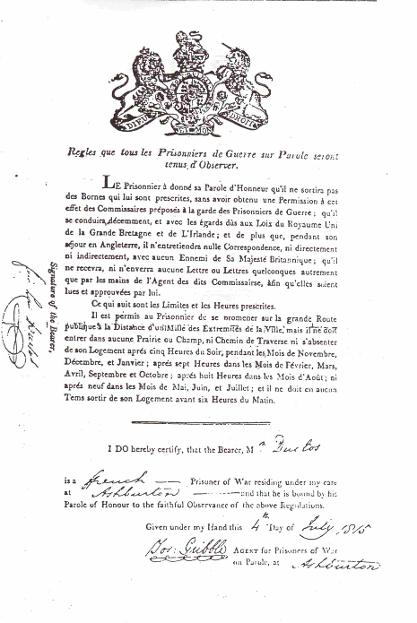
Above and above right: Documents
from an unknown printed source connected with the French prisoners of
war. Joseph Gribble, agent for the prisoners, certifies that the bearer,
M. ?? is a French prisoner of war residing at Ashburton, and that he is
bound by his Parole of Honour to the faithful Observance of the above
Regulations. Dated 4th July 1815.
Many thanks to Jeremy Hatch for these documents
*******
Died at Ashberton during the war
Mar. 10, 1815 B. Elvel*, Gloucester, Mass. Firefly.
Mar. 25, do. Abraham Burnham, , Mass. Price.
The prisoners' memoirs, or Dartmoor Prison, New York 1852, 151
* Benjamin Ellwell in Devon FHS Ashburton burials 1813-1837, 1997. Both are shown as 'American prisoner/parole'
Right: Grave of Francois Guidon, a French prisoner of war - this is to the right of the church entrance, just by the steps going up to the church hall.
My own photograph 2013.
'Ici repose Francois Guidon natif de Cambrai en France
Sous lieutenant au 16th Reg. de Lign, Decede le 18 7bre 1815 age 22 ans.
Recquisat in Pace'
*******
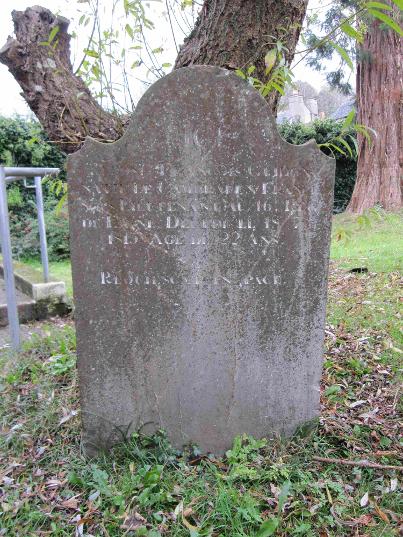
In his
book French Prisoners' Lodges, John T Thorp discusses a certificate
granted to a Mason of the Ashburton French Prisoners' Lodge
He says: 'A
Certificate granted to an initiate of this Lodge, is the only record of
its existence that has been discovered up to the present time.
Unfortunately, although the document is signed and sealed, it is not
dated, but it was, in all probability, issued between the years 1810 and
1814.
This interesting document, the design of which is
roughly drawn by hand on parchment, is 17 inches
by 14 inches in size, and is entirely in the French
language. As a general rule, these Prisoners' Lodge
Certificates were wholly written in French when, as
in this case, they were issued to a French Brother,
shewing clearly that they were intended to be used
in French Lodges only.
Although unfortunately somewhat faded, the Certificate is in an excellent state of preservation, (being)
a large red wax Seal* in an oval tin box 2 inches by 2 inches, attached
to the document by a narrow light blue ribbon, being particularly fine.
The recipient, Paul Carcenac, appears to have taken
the
two first degrees only, while the letter " C " appended to four of the
signatures, denotes that these Brethren also had only attained the
similar rank of Fellow-Craft (Compagnon).
It will be noticed, that in this Certificate the recipient
is obligated to affiliate himself to some regularly war-
ranted French Lodge, immediately on his return to
his native land, thus recognising the Lodge at Ash-
burton as an irregular or temporary one only........
........It is very unfortunate that no further details
of this Lodge are forthcoming, and it would also be interesting to know
during what years and for how long the prisoners were located at
Ashburton, in order that the date of the Lodge could be approximately
determined. Enquiries in the town and neighbourhood, however, have
resulted in nothing, even the presence of French prisoners there being
entirely absent from local tradition. '
(Translation of the certificate):
TO THE GLORY OF THE GREAT
ARCHITECT OF THE UNIVERSE.
The very worshipful Lodge of St. John, under the
distinctive name of United Friends, at the Orient of
Ashburton, England, to all regular Masons spread
over the surface of the earth.
Greeting. Fortitude. Unity.
We Master, Officers and members of the very
worshipful Lodge of St. John, under the distinctive
title of the Lodge of United Friends, at the Orient
of Ashburton, England, certify and attest to all
regular Lodges and to all regular Masons spread
over the surface of the earth, that our very dear
Brother Paul Carcenac, assistant commissary, is a
member
of our worshipful Lodge, that he has received the two first degrees of
Masonry, Apprentice and Fellowcraft, and has worked amongst us to the
entire satisfaction of all the Master-Masons. We therefore pray all
Brethren and all worshipful Lodges in the Universe to receive and admit
him as such after the usual proof, and obtain for him such assistance as
he needs, offering to reciprocate in similar circumstances, and
obtaining a promise from him that he will affiliate himself as soon as
possible after his return to France, to a regular Lodge, duly recognised
by the Grand Orient of France. In witness whereof, we have delivered to
him the present certificate, signed by us, countersigned by our
Secretary, and sealed with the Seal of our worshipful Lodge — and in
order that it may not be used by any other Brother except the said Paul
Carcenac, we have caused him to place his signature in the margin, Ne
Varietur.
Delivered in Lodge, regularly assembled, the 29th
day of the 8th month of the year of the True Light.
French
Prisoners' Lodges, A brief account of twenty-six lodges and chapters of
Freemasons, established and conducted by French prisoners of war, in
England and elsewhere, between 1756 and 1814, John T Thorp, Leicester
1900, pp52,53
*******
The reference is followed by the covering dates:
John Lewcroft, served in 36th Foot Regiment; 75th Foot Regiment; 76th Foot Regiment; 24th Light Dragoons; 8th Foot Regiment, discharged aged 48
WO 97/81/104 1786-1814
Richard Tapper, served in Devonshire Militia, discharged aged 61 after 18 years service
WO 121/17/88 1793
George Layman, served in 4th Foot Regiment; 5th Royal Veteran Battalion, discharged aged 39
WO 97/1127/543 1799-1814
John Coucher, served in Royal Artillery, discharged aged 36
WO 97/1221/43 1799-1816
Richard Canter, served in 28th Foot Regiment, discharged aged 36
WO 97/469/142 1803-1816
Thomas Angel, served in 4th Royal Veteran Battalion; 40th Foot Regiment, discharged aged 36
WO 97/1125/9 1803-1821
Thomas Joint, served in 28th Foot Regiment; Royal Army of Reserves, discharged aged 50
WO 97/472/143 1803-1825
James Stroud, served in 28th Foot Regiment, discharged aged 40
WO 97/476/38 1806-1814
Also James Stroud, served in 28th Foot Regiment; 1st Royal Veteran Battalion, discharged aged 40 after 8 years 9 months of service.
WO 121/187/131 1816
Nicholas Couch, served in 81st Foot Regiment; 11th Foot Regiment, discharged aged 42
WO 97/906/93 1806-1829
James Hillock, served in the 1st Foot Regiment, discharged aged 29
WO 97/227/100 1807-1814
John Wicks, served in 5th Foot Regiment, discharged aged 30
WO 97/276/120 1811-1815
James May, served in 4th Foot Regiment, discharged aged 42
WO 97/264/31 1813-1836
Richard Chalk, served in 90th Foot Regiment, discharged aged 40
WO 97/987/71 1818-1839
Joseph Eggbeer, served in Royal Sappers and Miners, discharged aged 43
WO 97/1149/57 1825-1845
George Layman, served in 4th Foot Regiment; Royal New South Wales Veterans; 5th Royal Veteran Battalion, discharged aged 53 (in 1830)
WO 97/1204/80 1830
Thomas Maunder, served in 60th Foot Regiment, discharged aged 25
WO 97/736/99 1832-1836
James Wallace, served in Royal Sappers and Miners, discharged aged 46
WO 97/1152/120 1832-1854
Thomas Vinning, served in 7th Dragoons, discharged aged 20
WO 97/136/68 1836-1837
Thomas Hannaford, served in 46th Foot Regiment, discharged aged 22
WO 97/605/127 1839-1843
Walter Newland, served in 97th Foot Regiment; 11th Foot Regiment, discharged aged 27
WO 97/1049/43 1840-1850
*******
The Crimean War (1853 - 1856)
Mr John Hern, portreeve, chaired a public meeting to raise funds to support 'the widows and orphans of our brave soldiers and sailors who have been engaged in the eastern war.'
Western Times 25 November 1854 p7 col5
In 1855 the South Devon Militia were recruiting in Ashburton - something that had not been seen for many years
Exeter and Plymouth Gazette 24 March 1855 p4 col2
In July 1856 a company of Dragoons from Exeter arrived in Ashburton, and stayed for two days. On the day they left a company of the 11th Hussars arrived, going in the other direction.
Western Times 12 July 1856 p7 col3
* ******* *
* The Zulu War (1879) *
When Sir Charles Tucker's regiment arrived in Dublin following the Zulu War, many had no boots, and their red coats were in tatters. Sir Charles refused to have new clothes for the men before they marched through the city, saying that the British public should see how their soldiers were kept.
http://www.nam.ac.uk
Western Times 15 February 1935 p9 col2
For more on Sir Charles, see The Tucker family sub-menu under the People and properties section
*******
The 1900s
'The officers and men will bring their own horses, clothing, saddlery and accoutrements...'
Royal Warrant published Christmas 1899, quoted in 27th (Devonshire) Company, the 7th Battalion, The Imperial Yeomanry, by Devon Heritage https://www.devonheritage.org/Places/DevonCounty/ImperialYeomanry-27thDevonshireCompany.htm - accessed 05-09-2024
At the prize giving for the A (Ashburton) Company of the Haytor Volunteers it was announced that 15 men had volunteered for garrison duty. 4 men had volunteered for the front, and had all passed their medical examination: they were to be sworn in that evening (applause).
After the prize giving Privates Mortimer, Willcocks, Lidstone and Furneaux marched through the hall and up on the platform, where they were attested. There were ringing cheers.
Dancing followed, which continued for some hours.
Western Times 18 January 1900 p3 col5
The next day there was a 'great demonstration' at Ashburton as the volunteers marched down East Street, thence to the Armoury and then to the railway station.They were preceded by a band playing 'Soldiers of the Queen', and the many spectators 'cheered heartily'.
25 men from the 5th Haytors left Newton Abbot at 11.50.
Western Times 19 January 1900, page 8 col5
Totnes Weekly Times featured 'A Letter from an Ashburton Man' in its
columns for the 5th May. Private W Jeffery, of the 1st Devons, wrote to
his parents in April from Arcadia Camp in Ladysmith. He said that they
were recovering their strength again, were getting good food, and all
was quiet at the moment. They didn't know whether or not they would be
sent further up the country. He said that thousands of British men had
been killed or wounded, but that the Boers had lost more than them.
Although they were too weak to cheer much 'There was great rejoicing in
Ladysmith the day we got relieved I can tell you*....We will all be glad
when this is over.' Private Jeffery said that on January 6th their
regiment made a charge that would never be forgotten, 'I want you always
to remember that day as I shall'.
Totnes Weekly Times, 5 May 1900, p3 col5
*The
township of Ladysmith was under siege from 2nd November to January
27th. https://www.britishbattles.com/great-boer-war/siege-of-ladysmith/
Totnes Weekly Times 15 September 1900, p8 col5
When peace was declared in May 1902, Ashburton was 'somewhat tardy' in reacting to the news: the Western Times put this down to a hoax declaration that had been made some weeks previously.
But mottoes and flags gradually appeared.
Western Times 6 June 1902 p10 col3
When Lieutenant Dawson arrived back from South Africa, the band of A Company, VBDR, played 'See the conquering hero comes' as the train drew into the station. A detachment of the Volunteers pulled a carriage containing Lieutenant Dawson and his parents to the top of West Street, where he made a speech praising the role of the Volunteers in the war.
Western Times 14 August 1902 p7 col3
John Harris Leaman, born in 1859, had joined the Northamptonshire Regiment and had been involved in the Boer War, fighting at Majuba Hill.
At the time of his death in 1936 he was living at 5, Station Cottages.
http://www.freebmd.org.uk
Western Times 6 November 1936 p7 col2
Pte G Routley, of the Devonshire Regiment, was awarded the Queen's South Africa 1899-1902 medal. George was attested for the 3rd Battalion Devonshire Regiment in September 1898, aged 18 and 5 months. He served in South Africa during the Boer War and was discharged by the end of 1904*. Although his age at attestation indicates that he was born around April 1880, other records show his birth date to be a year later.
British Army Service Records
www.freebmd.org.uk/
Parish records
*The 1901 census shows G Routley, the son of T[homas] G[eorge] and Ellen, as a general labourer living at Rewlea Cottages. 1901 census RG13, piece no. 2053, folio 47, p 25
Medal sold privately, not in my possession
Francis Whiddon, also born in 1859, (https://www.freebmd.org.uk) is listed amongst the New Zealand Boer War Servicemen. A miner, he had joined the 10th Contingent, North Island Regiment B Squadron, departing from New Zealand on 14th April 1902. His next of kin was his mother, Sarah Whiddon of North St., Ashburton.
The 1861 census has a Whiddon family living near to the Victoria Inn in North St. At the head is Jane Whiddon, and with her is her 37 year old daughter, Sarah. Jane has 3 grandsons with her - the middle one is 2 year old Francis. Although Sarah is unmarried, several children appear with her as their mother on other censuses.
1861 census RG09, piece no.1405, folio 58, p25
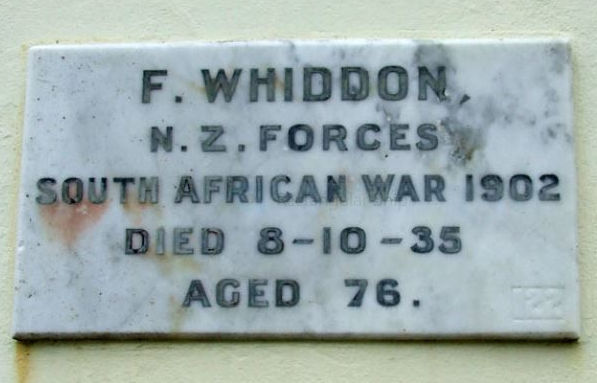
The online cenotaph at the Auckland Museum has a memorial at the Waikaraka Park Cemetery to F Whiddon
N Z Forces, South African War 1902, died 8th October 1935, aged 76.
Further information on the website confirms his service no. of 8764, and
adds that he was in the Mounted Rifles.
http://www.aucklandmuseum.com - Accessed 28-08-2016
Many thanks to Auckland Museum Online Cenotaph for allowing me to use this image.
World War 1
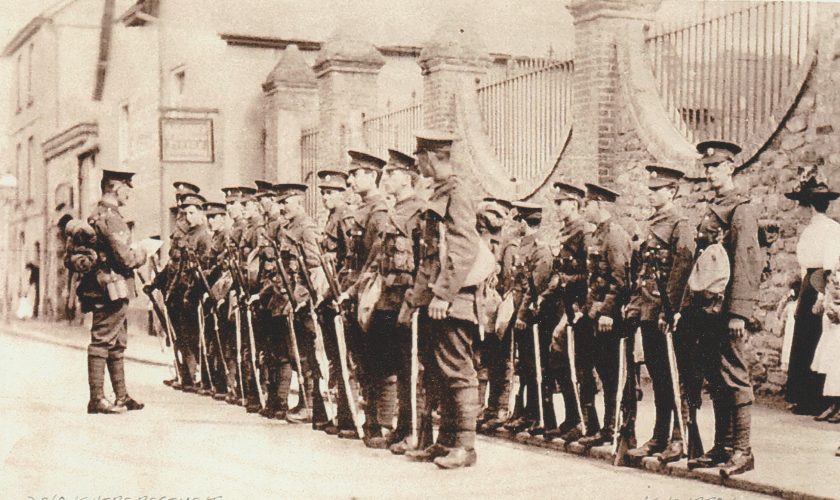
Exeter and Plymouth Gazette 22 September 1914 p6 col6
'A number of Ashburton Territorials arrived home on Friday evening, looking very fit and well, and are eagerly looking forward to their visit to India.'Western Times 29 September 1914 p6 col4
'My
grandfather, William Martin, joined the Army and spent 3 years in
China: when he came home he married my Grandmother on October 4th 1913
at Devonport. During WW1 he served all over the world and fought in the
trenches in France. He vividly remembered all that happened. He was
buried alive more than once by hand grenades exploding near him. He was
recommended 5 times for the Distinguished Conduct Medal. Modestly he
joked about the time he carried to safety a man who had had his legs
blown off and placed him in the care of another man who subsequently
received the D.C.M. Later he received a medal for gallantry under fire
and was mentioned in Italian orders. He was recommended for the
Distinguished Service Medal, received the Military Medal and the
Meritorious Service Medal. By the time he left the Army he was a
Sergeant Major. He died in 1982 aged 92'.
Many thanks to Christine Lunt for the information above
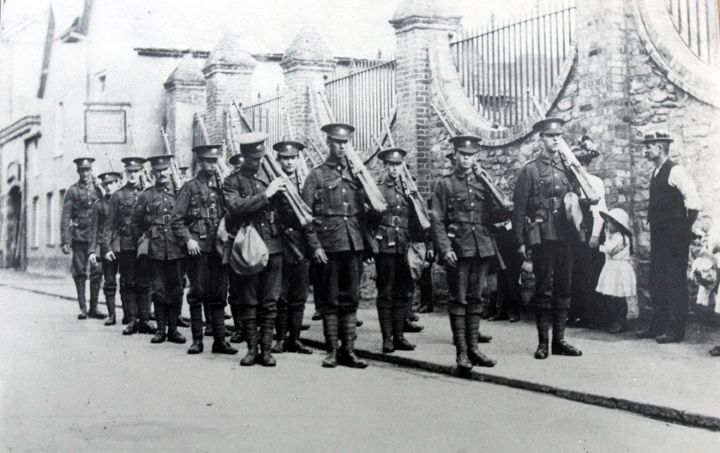
Above: Men from Ashburton off to war, marching down St Lawrence Lane. They are the 5th Devonshire Regiment, en-route to Plymouth before embarking at Southampton. They went to India and then on to Egypt, and eventually to France, and were involved in battles such as The German Retreat, the Hindenburg Line, Battles at Bullecourt, Cambrai, Bapaume, Arras, and many more.
Many thanks to John Germon for the photograph and information. John's grandfather is also in the group picture below, centre.
The 14 year old recruits
'My father, William Smerdon, was born in 1900. He joined up as the war started - he was only 14.
My
mother's father, George Routley, and two of his brothers joined up:
Frederick and Wilf, who was a postman. Only George and Wilf came back
from the war'.
Many thanks to Ernie Smerdon for the information above
The postcards right and below (from my own collection), come from albums connected with W T Gill, 1/5 battalion, Devonshire Regiment, 1914 - 1921. (The albums are not all in my possession)
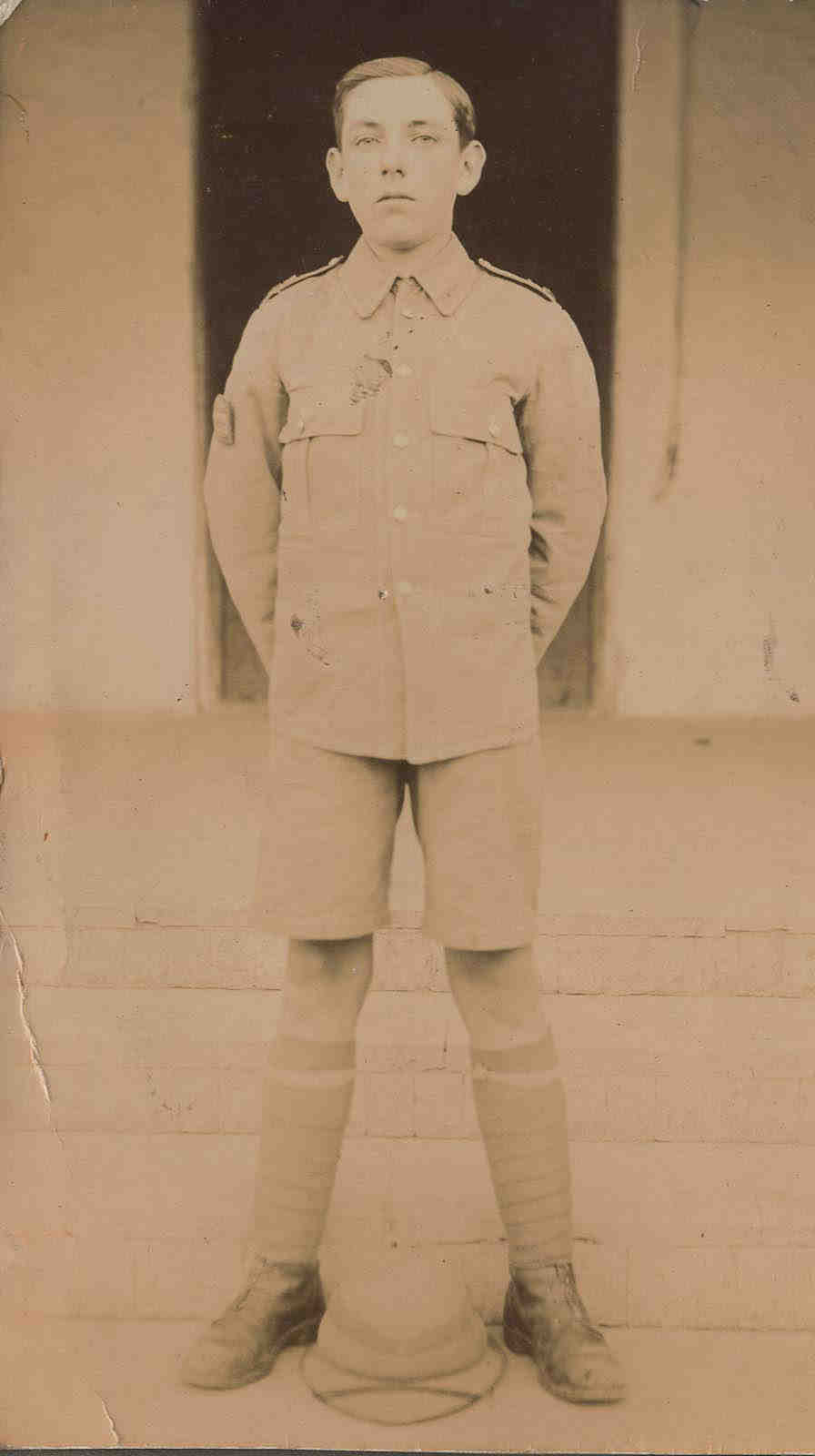
The soldier on his own is believed to be W T Gill himself. Written beside the photograph on the right is 'Taken at Mooltan age 14'
The birth of William Thomas Gill was registered in the Newton Abbot district in the first quarter of 1900.
https://www.freebmd.org.uk
See The Gill family, under Individual Families
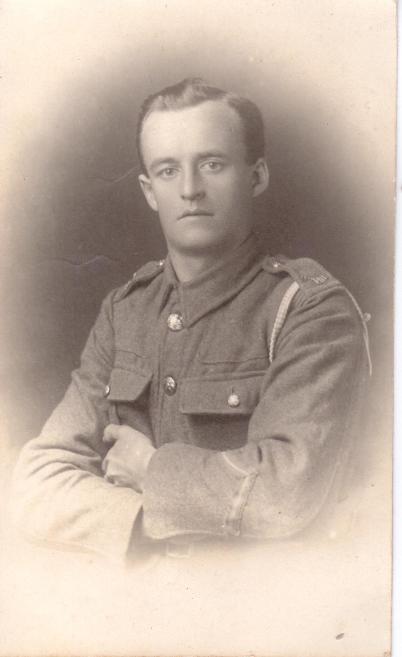
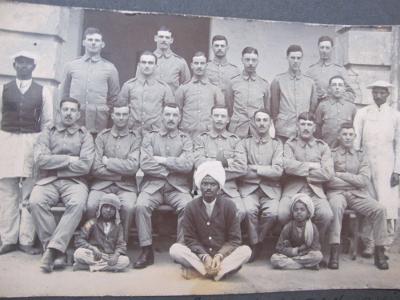
Above: 'No 4 Section H. Coy Mooltan 1914'
Writing in the album says that the battalion boarded HMT Nevasa at Southampton in 1914, and were bound for India. They ended in Europe 1918-21.
On Coronation Day (of George VI) 1937 Bandsman W T Gill gave a salute. He was, according to the Western Times, a former bugler with the 6th Devons T A.
In 1949 he was described by the Exeter and Plymouth Gazette as a bugler in the 5th (POW) Battalion of the Devons in the 1914-18 war.
Western Times 21 May 1937 p10 col2
Exeter and Plymouth Gazette 11 November 1949 p7 col4
Below: This certificate says that Pte Gill was with the 4th Reserve Battalion Wilts. Regiment when he became a First Class Signaller on July 5th 1918
From my own collection
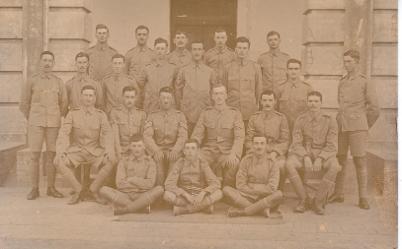
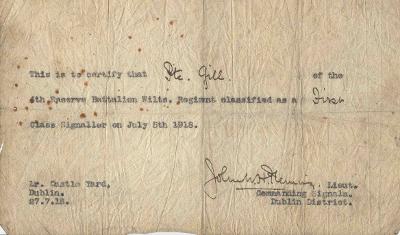
Below: '31. Bugle Band. 5th Devons. Woodbury 1914'.
Written underneath is 'War declared when we were here Aug 4.'
Stand-to appears to be short for Stand-to-arms, a procedure carried out just before dawn and just after dusk (in theory the most likely time for attack) where men stood with their rifles loaded and bayonets fixed.
http://www.firstworldwar.com/atoz/standto.htm - Accessed 29-05-2017
From my own collection
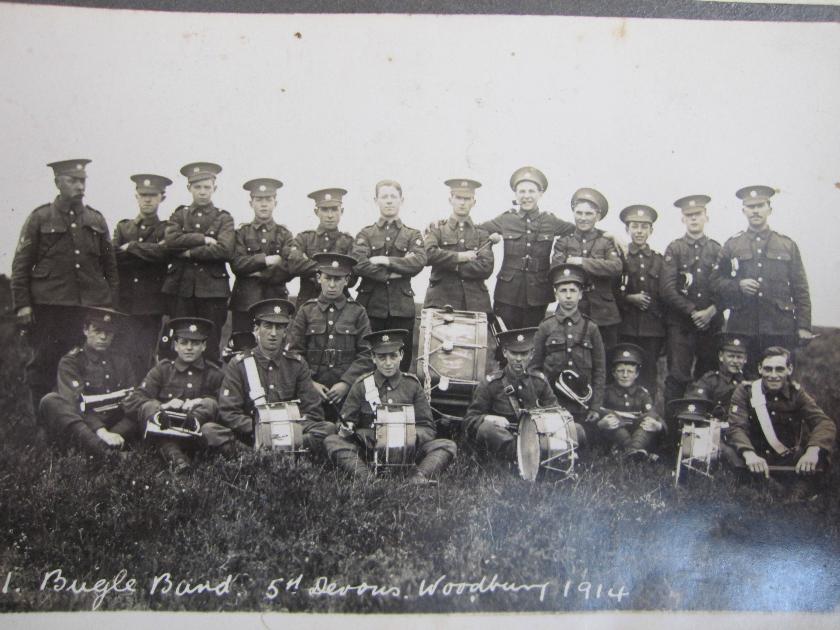
Below: Photographs taken in India by W T Gill
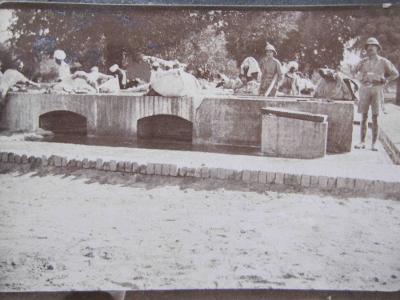
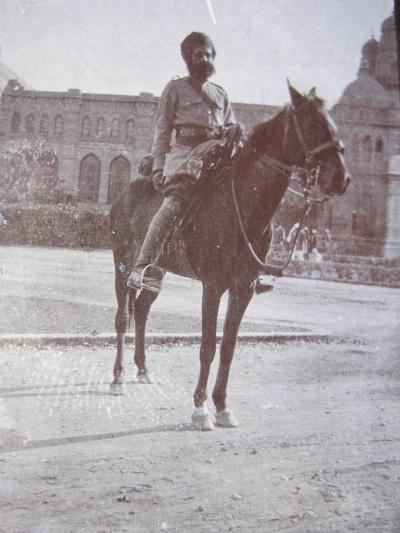
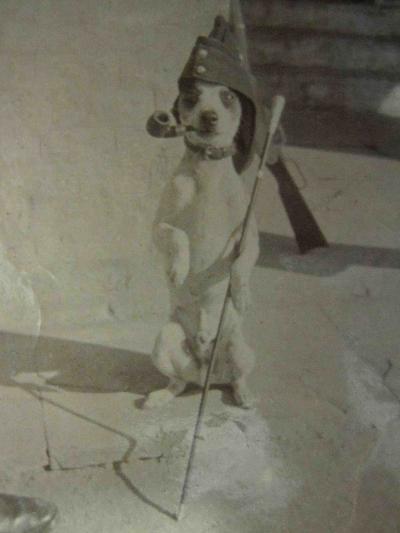
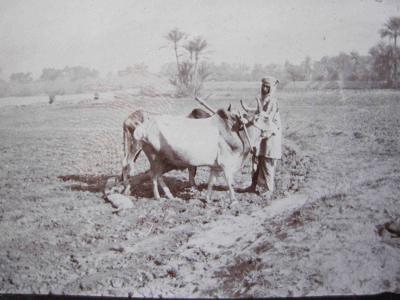
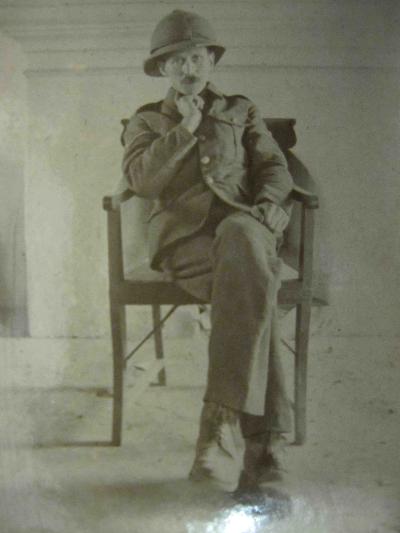
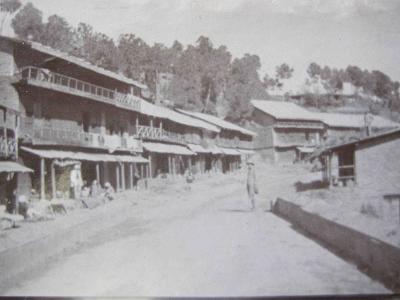
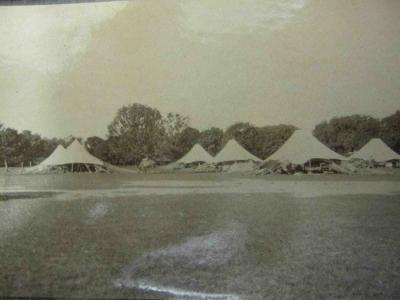
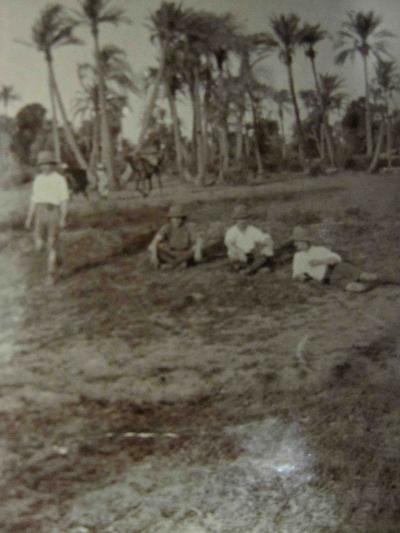
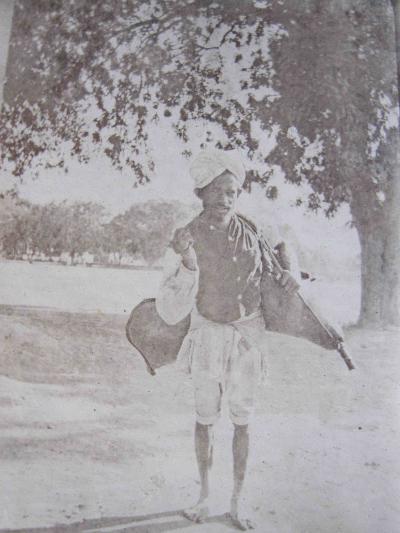
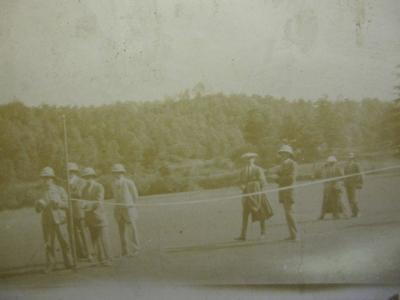
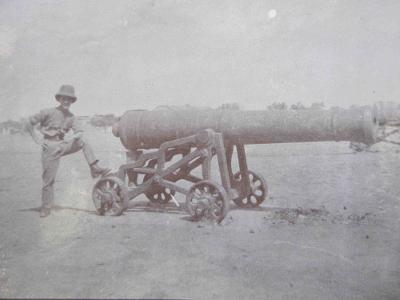
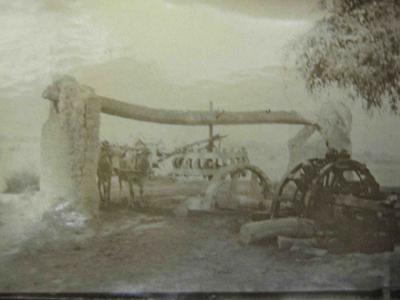
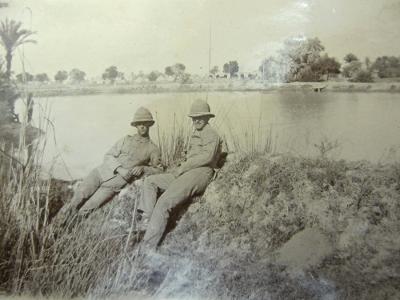
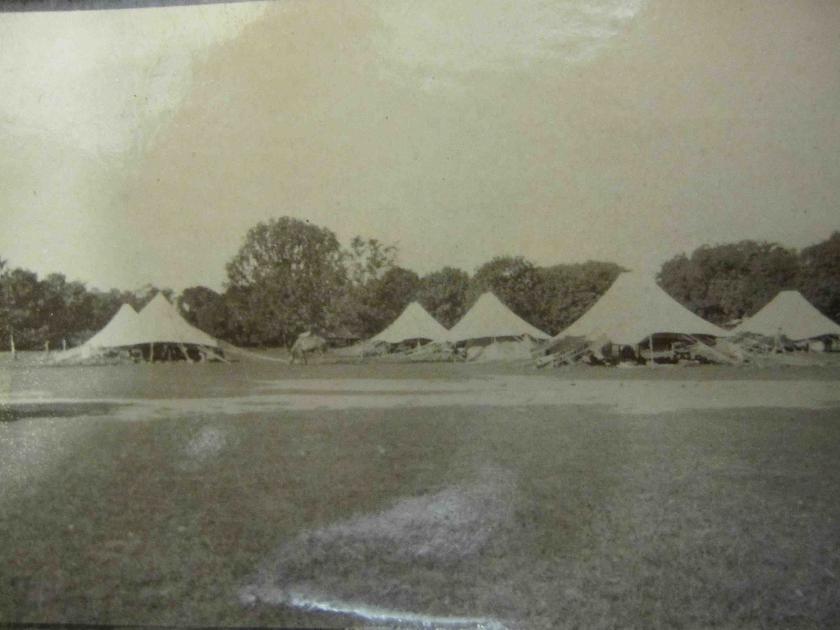
In 1919 the Western Times ran an article about four sons of Mr and Mrs W Bovey of Blackmoor, Ashburton, who had all fought in the 1st World War.
Corporal James M Bovey was in the 2nd Devons at the start of the war, and had served until late 1918, when he had been discharged after a bomb smashed his leg.
Sergeant Thomas Bovey joined up in Australia, later went to Egypt, and then came to England as an instructor. He was then sent to France, suffered frostbite and rheumatism, and was returned to Australia for discharge.
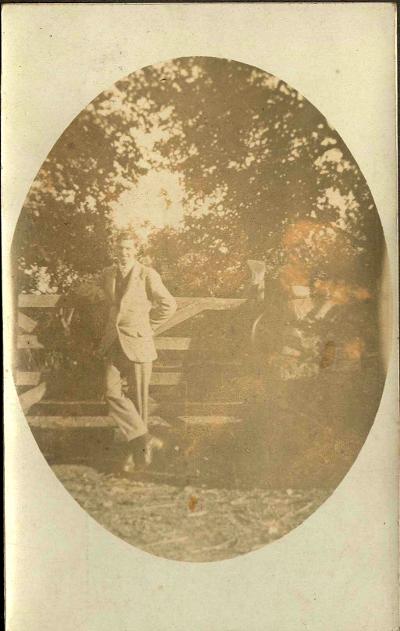
Private Joseph H Bovey, joined the Royal Marine Light Infantry as soon as he was old enough in 1916, arriving in France in 1918. He had been taken prisoner in March of that year.
A fifth son, William Bovey, had been attested at the start of the conflict but then had been rejected on medical grounds.
Western Times 14 March 1919 p7 col 3,4,5
Left: Photograph labelled 'Jack Bovey, Blackmoor 1919'
From my own collection
A photograph in my collection in poor condition (not shown) is labelled 'J Bovey and F Ryall, Multan'.
F Ryall is probably Francis W Ryall, who was 9 years old and living in North Street in the 1901 census. He was the son of Francis C Ryall, a woolcomber, and his wife Selina.
1901 census RG13, piece no 2053, folio 26, p17
A Francis William Ryall, born 1891, died in 1986 in the Newton Abbot registration district.
England and Wales deaths transcriptions, 1837-2007, available via www.findmypast.co.uk
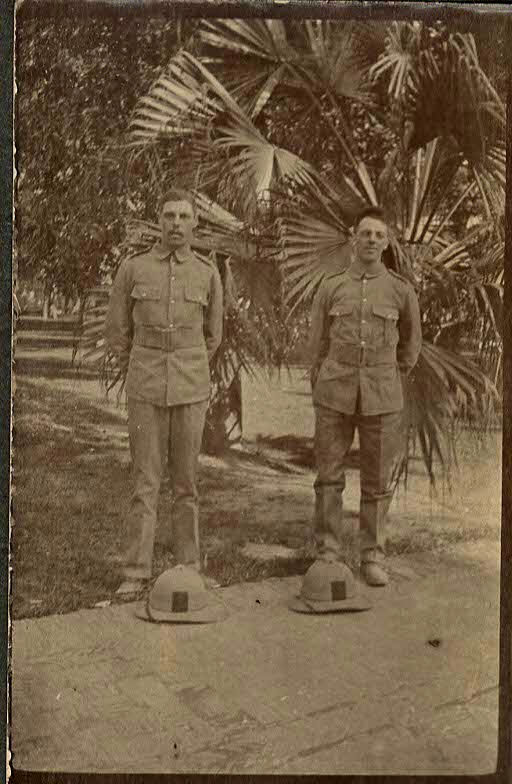
Below: 'F Ryall'
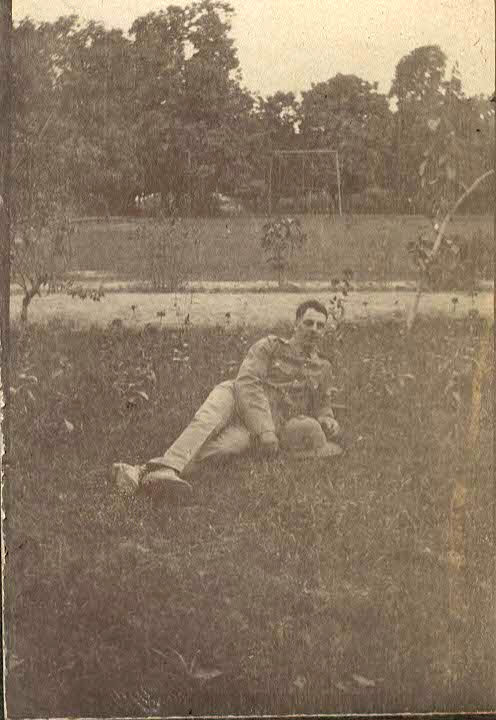
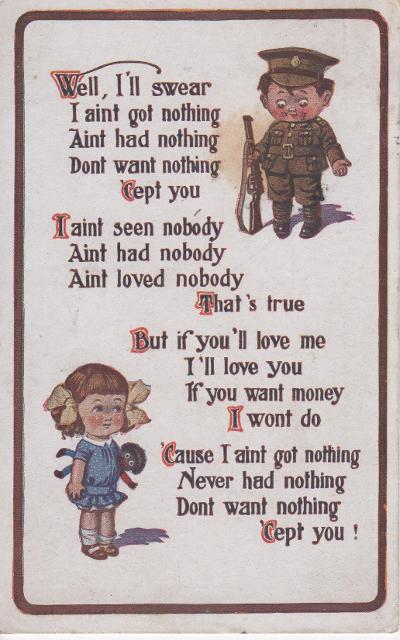
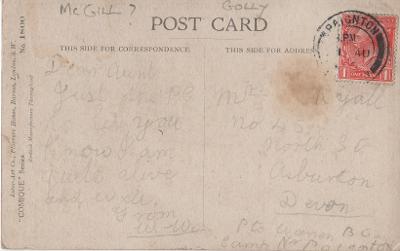
http://www.freebmd.org.uk
1911 census RG14, piece no. 12841
He may have married Mary E Bowden in the September quarter of 1918. A Mary Elizabeth Stone is mentioned on George's memorial in St Andrew's Churchyard.
Marriage ref George E Stone married Mary E Bowden, Sept Q 1918, Newton Abbot 5b 331
http://www.gravestonephotos.com
George was 'gazetted' (ie his name appeared in the London Gazette) after being awarded the Military Medal. He was Private 241015 of the 5th Battalion Territorial Force, Devonshire Regiment.
Supplement from the London Gazette, 11 Dec 1918, p14656
His medal card is held at the National Archives.
http://discovery.nationalarchives.gov.uk, ref WO 372/23/171565
George died in 1956, aged 64
http://www.gravestonephotos.com
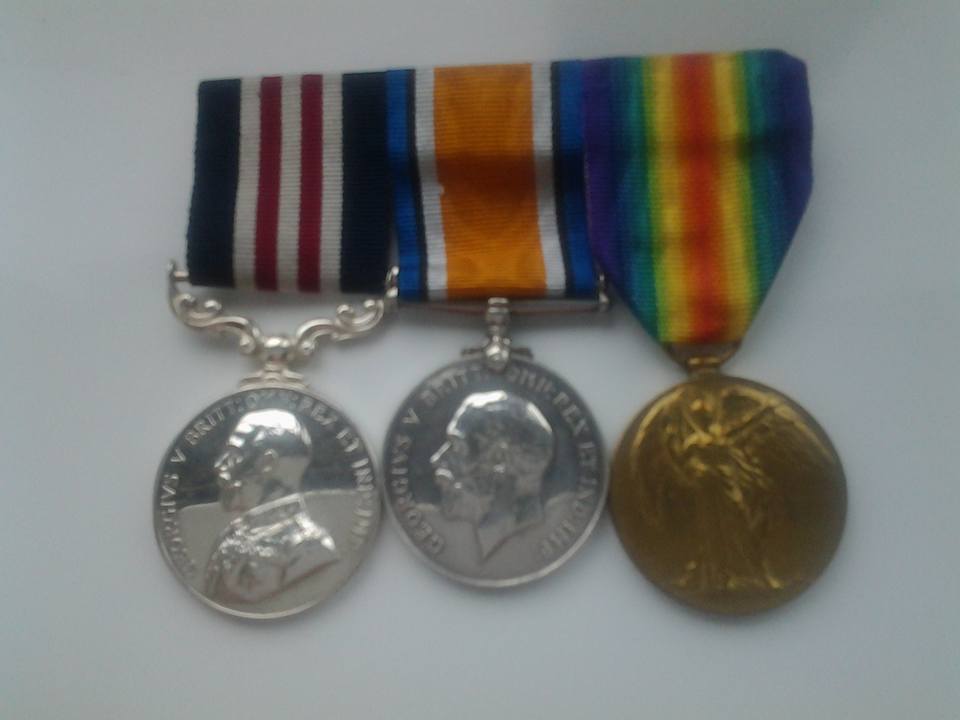
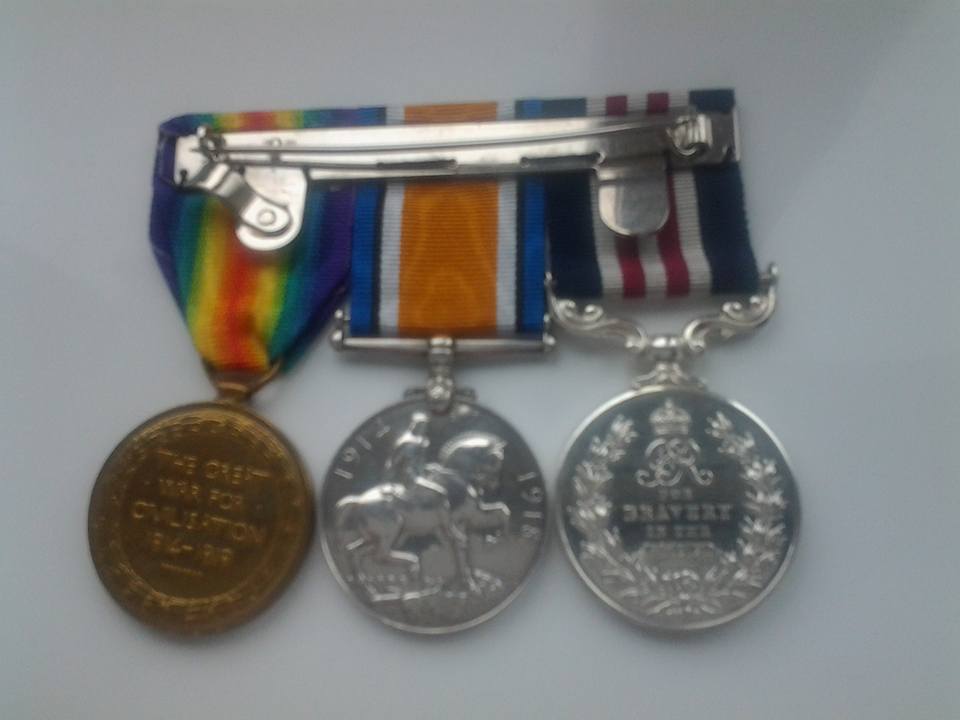
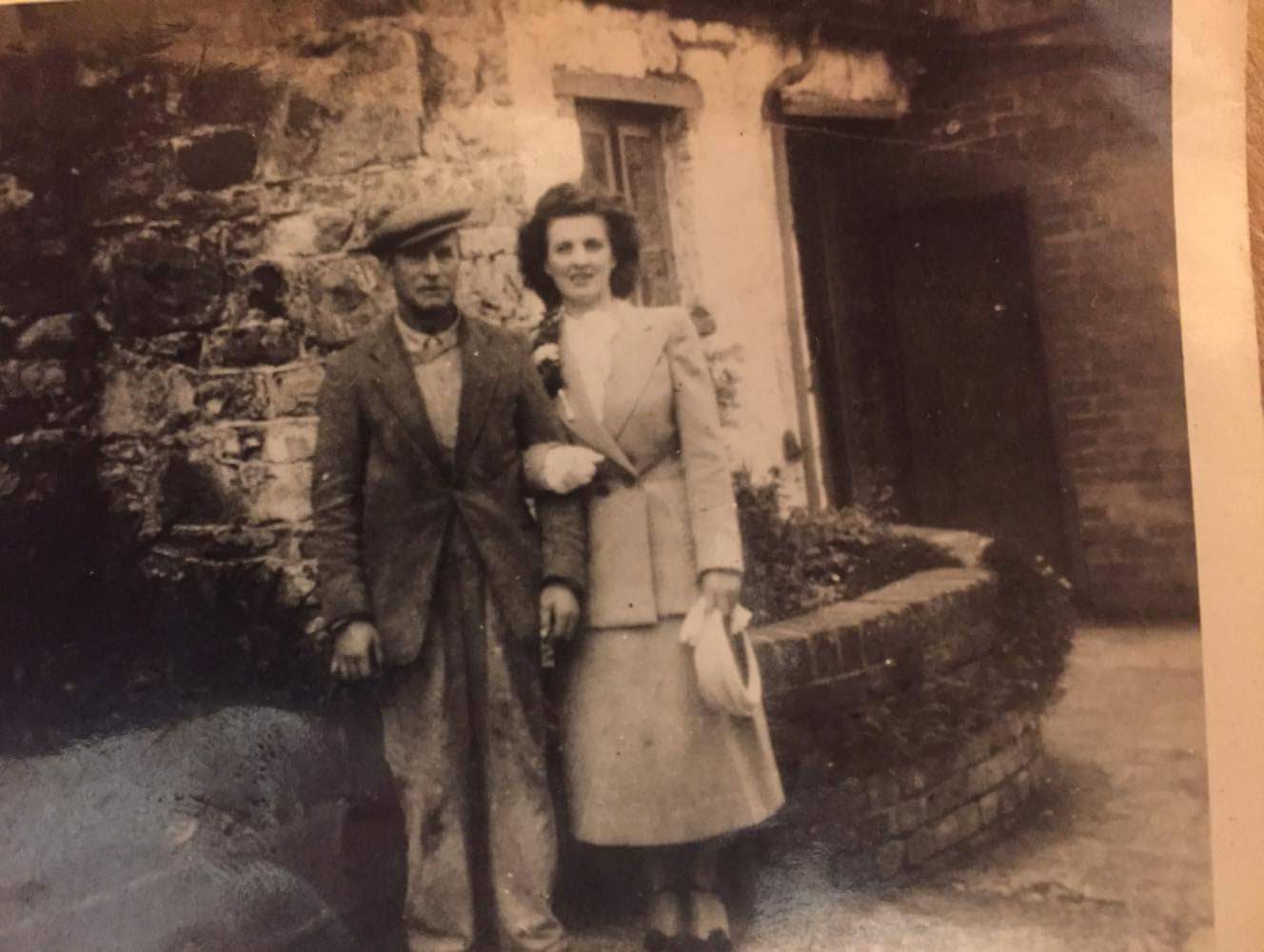
Many thanks to George for the photographs and the above information.
*******
Western Times 10 August 1916 p3 col3
*******
Arthur Pengelley was probably the Arthur Pengelly son of Emma, baptised at Ashburton on March 8th 1883.
By 1891 his mother had married Eli Dodd, and the family are living in Ebenezer Cottages, Cad Lane, Ashburton.
Parish records
http://www.freebmd.org.uk
http://www.freecen.org.uk
The 1901 census has Arthur (although the name looks more like Pargelly) with Eli and Emma at Whistley Cottages - 18 year old Arthur is a Seaman in the M[erchant] Service.
In June 1903 he enlisted in the RFA at Devonport. Aged 20 years and four months, his current occupation was that of Seaman. He was given a regimental number of 31649.
Bombadier A Pengelly, Reg. no. 31649, 112th Battery RFA, was awarded the Distinguished Conduct Medal 'For conspicuous gallantry during the attack on Hooge on 9th August 1915. He assisted in keeping up communication under very heavy shell fire, and although wounded at 4pm conotinued at his work till he was relieved at 5.30pm.'
Recipients of the DCM who performed further acts of distinguished conduct were awarded a Bar, and Arthur received one in September 1918. He showed 'Conspicuous gallantry and devotion to duty while in charge of an anti-Tank gun. The gun early received a direct hit, and this N.C.O. then led his detachment to reinforce neighbouring infantry. He also took part in a bombing attack. Later he organized a party to take a wounded officer to the dressing-station. Finally he took command of a platoon of infantry and held a position for two days, until he found out where his own battery was an rejoined it. He rendered valuable service.'
As the certificate underneath shows, he also earned the Military Medal, an award instituted in 1916 (backdated to 1914).
1901 census RG13, piece no. 2053, folio 8, p7
Medical history.
Supplement to the London Gazette, 15 September 1915, 9181
Supplement to the London Gazette, 3 September 1918, 10259
http://www.greatwar.co.uk
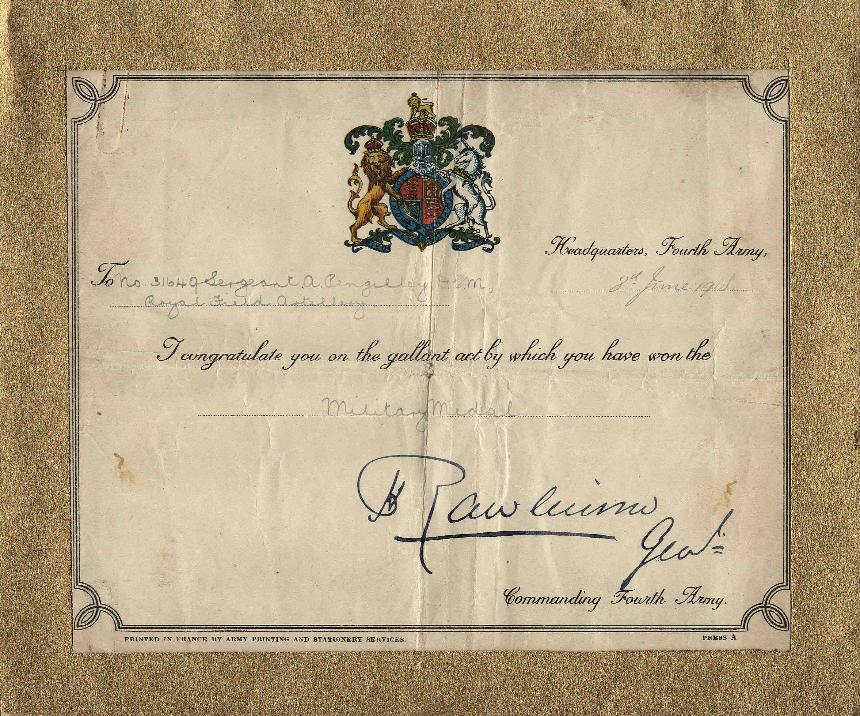
From my own collection
*******
Private Stanley William Mann embarked on the 5th January 1916 with the 8th Reinforcements, 23rd Infantry Battalion, 9th Infantry Brigade. A single man born in 1895, his next of kin was his mother, Mrs Gill of 38 East Street, Ashburton.
Australian Imperial Force Embarkation Roll 1914-18
Stanley William T Mann's birth was registered in the Newton Abbot registration district in the March quarter of 1894.
In the 1901 census 7 year old Stanley is living in East Street with his father William Henry Mann, his mother Elizabeth Mary Mann, 3 older brothers, and Mary's father Daniel Townsend.
By 1911 Stanley is the only son living with his parents, and very shortly after the census was taken both his parents died: Elizabeth Mary, aged 61, was buried on May 16th, and his father William Henry, aged 63, was buried on May 23rd. The parish register records that both burials were certified by Leonard J W Babb - the Wesleyan minister.
https://www.freebmd.org.uk
1901 census RG13, piece no. 2053, folio 36, p3
1911 census RG14, piece no. 12727
Parish records
Private William James Pengilley embarked on 13th February 1915 with the 2nd Reinforcements, 15th Infantry Battalion, 4th Infantry Brigade. A single man born in 1885, his next of kin was Mrs W Pengilley, Orley House, Ashburton.
Australian Imperial Force Embarkation Roll 1914-18
See also https://www.aif.adfa.edu.au/showPerson?pid=238028 - Accessed 30-08-2016
Orley House had been bought by Mr W Pengilley for £510 in 1905.
Exeter and Plymouth Gazette 30 June 1905 p3 col4
In
1915 26 wounded Queensland soldiers returned to Brisbane from the
front. Amongst them was Private W. J. Pengilley, whose mother, W.
Pengilley, was from Orley House, Ashburton. Private Pengilley's
regimental number was 1419, and he was in the 15th Btn.
The Telegraph, Brisbane (Queensland) 21st August 1915 p6 col8
The Brisbane Courier (Queensland) 1 September 1915 p7 col6
Available on the free site of Australian newspapers (Trove) at https://trove.nla.gov.au/newspaper*******
At the outbreak of war he enlisted in the Canadian Expeditionary Forces, trained at Val Cartier, Quebec, and sailed for England in September 1914, arriving in Southampton on the 14th of October 1914.
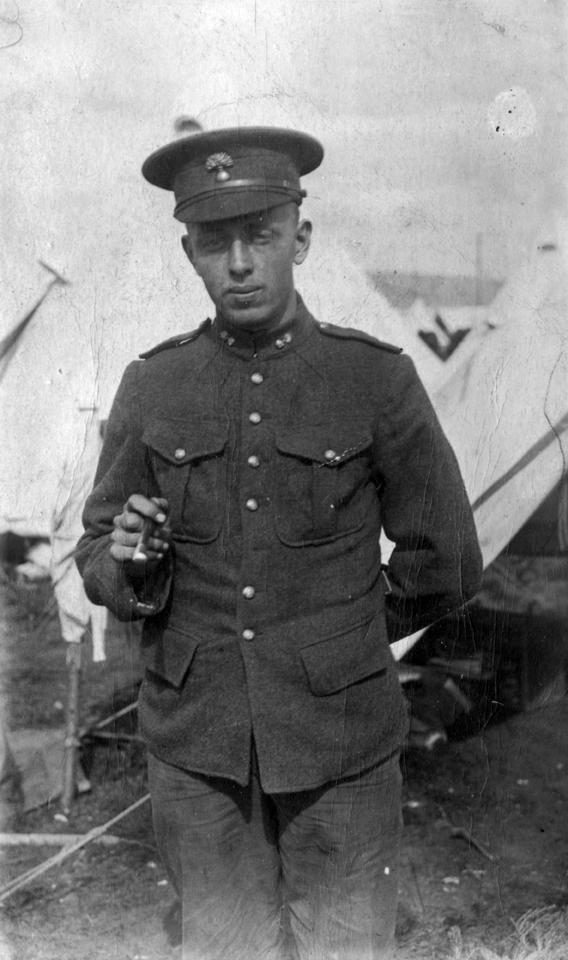
On the 17th November 1916, Fred enlisted in the Leicestershire Regiment. In early 1917 he completed a 20-week officers' training course in Newton Ferrers, Devon and received a commission as a 2nd Lieutenant.
Harold was baptised in Wolborough parish in October 1887, the son of William John Rowell, an architect, and Harriet. Their abode was Devon Square.
Wolborough parish records
In the 1911 census Harold, a 23 year old medical student, was living with his father, sister, brother, and three servants at 9, Devon Square, Wolborough, Newton Abbot.
1911 census, RG14, reg district 272, piece no 12754
His medal index card for 1914-20 shows that he was in the Royal Army Medical Corps, attached to the Cameron Highlanders. In his third record he had risen to the rank of Major.
British Army Medal Index Cards, 1914-1920, ref WO372/17
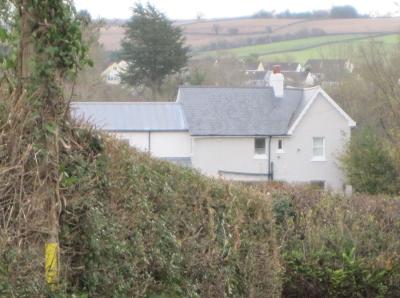
My own photograph 2017
Western Morning News 17 Jan 1916 p3 col2
He did not marry until 1926, at which time he was living in Cherton Square, London. The 39 year old, a captain in the RAMC, married Dora Edith Hudson, aged 22.
Parish records.
1939 Register, available through https://search.findmypast.co.uk
In 1940 Maj (temp Lt.-Col) H A Rowell MC was to be Lt.-Col from 27th July 1940.
Second Supplement to the London Gazette, 26 July 1940
Harold went to France with the British Expeditionary Force in 1915, and remained there until 1919, where he was OIC Surg Div 1 Gen Hosp. He was in North Russia Aug-Oct 1919. From 1920-23 he was in the Black Sea, and was in Shanghai in 1927. He was stationed in India between 1927 and 32, and again between 1936 and 39. He was a temporary Colonel between 1942 and 43.
Commissioned Officers in the Medical Services of the British Army 1660-1960: Roll of Officers in the Royal Army Medical Corps 1898-1960, R Drew, 1968, p146
*******
'Druid Plantations were filled by Canadians in the 14-18 war. Ausewell Hill was made impassable by the lumber waggons.'
Note made by Mr. or Mrs. Hatch, pre 1998. Source of information unknown.
Thanks to Jeremy Hatch for this document.
*******
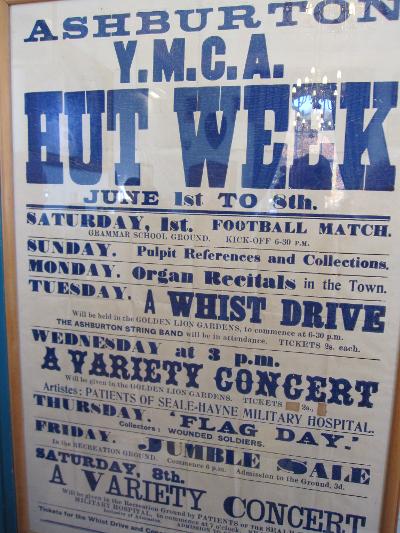
Most of the staff were voluntary, and most were women.
In
August 1916 Admiral Beilesford wrote to the Spectator, proposing a fund
to provide education, 'preferably for a sea career' for the children of
members of the British Mercantile Marine who had died or sustained
permanent injury during the war. 'It is accordingly proposed by means of
Flag Days, and through the generous support of those who can afford to
subscribe amounts large and small, to organize a Fund having this
definite object in view.'
The admiral signed himself President of the Sailors' Day Fund
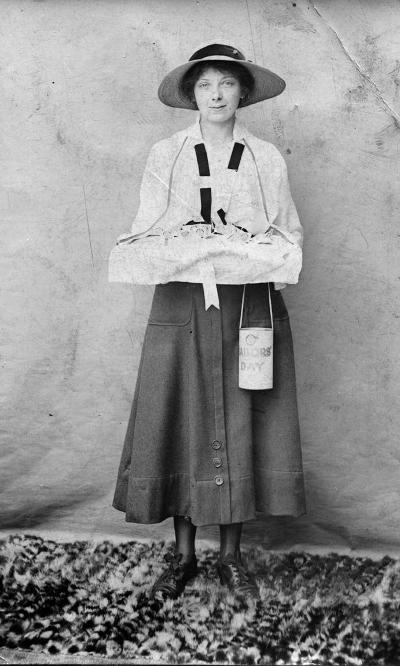
In
1919 Mrs Herring-Mason's Operatic Society gave 4 performances of The
Pirates of Penzance. The considerable proceeds were to be donated to the
Ashburton War Memorial Fund.
Exeter and Plymouth Gazette 6 March 1919 p4 col3
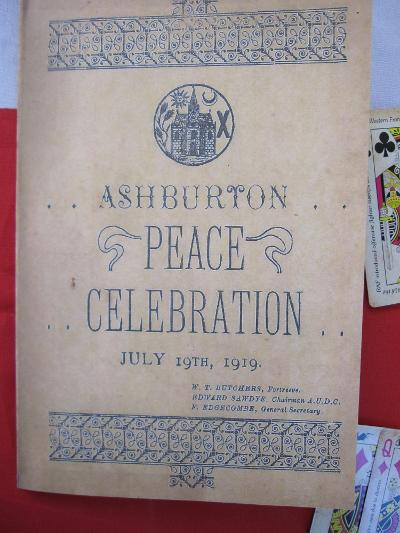
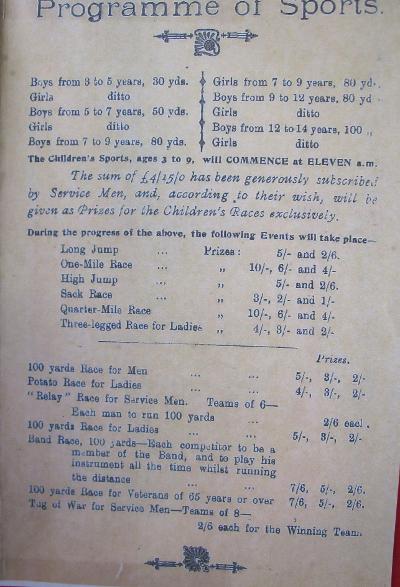
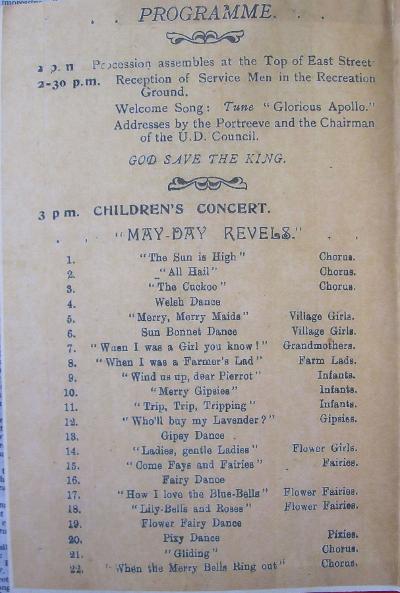
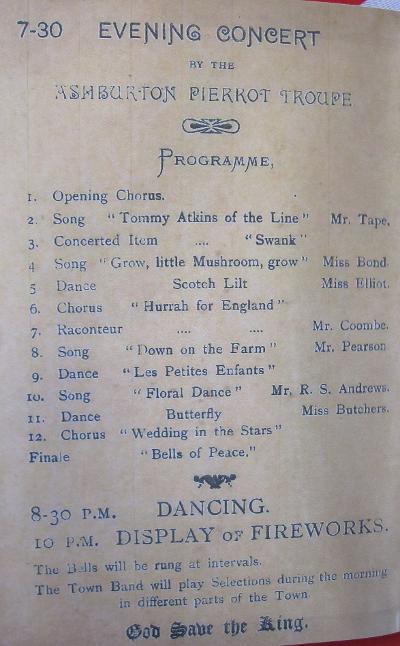
*******
'The Great War cast a long shadow over the early 1920’s. Veterans of the conflict sadly shook their heads at any mention of comrades who had failed to return. The newly erected war memorial was a constant reminder of local men and youths who were killed in the conflict'.
Many thanks to Hazel Bray for the above recollection.
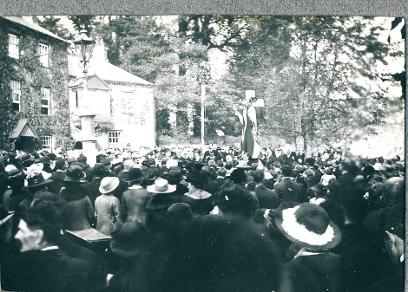
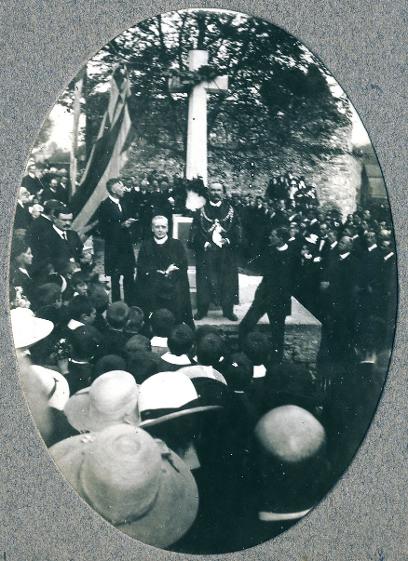
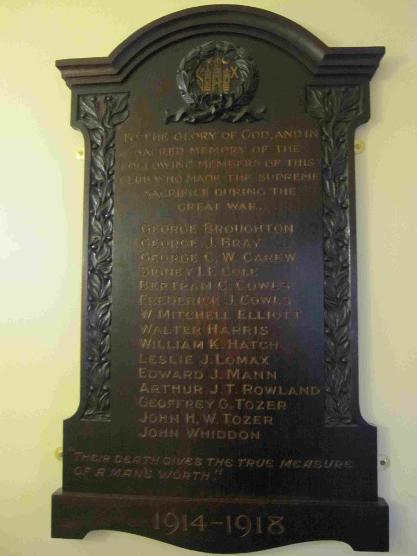
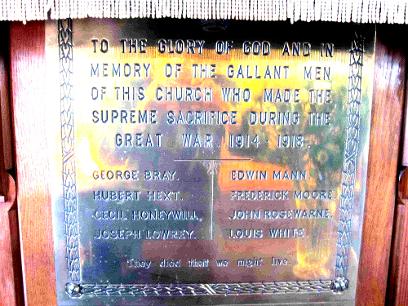
Left: The memorial to members of the Constitutional Club who died in World War 1
Many thanks to the Constitutional Club for allowing me to take this photograph, 2014
Above: The memorial in the Methodist Chapel. The names are: George Bray, Hubert Hext, Cecil Honeywill, Joseph Lowrey, Edwin Mann, Frederick Moore, John Rosewarne and Louis White.
My own photograph 2015
World War II
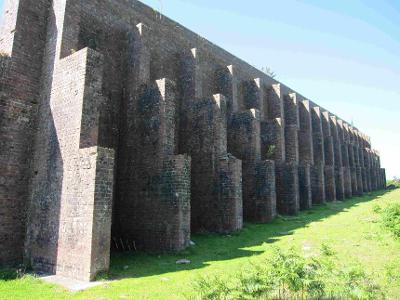
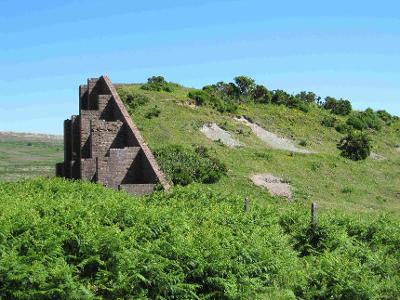
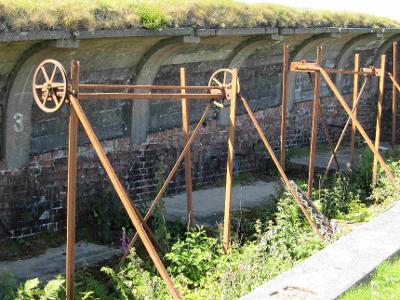
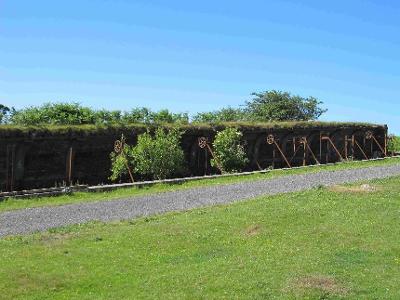
Writing to the Western Morning News in August 1938, I D Jago of Baberton House had great concerns about a proposed visit of members of the Hitler Youth Movement to the country. Three weeks in England, including 5 or 6 days walking along the east coast to Grimsby, could, Mr Jago* argued, provide some 'useful information'. He quoted an example from the previous war, where some German nephews of a British officer who spent their holidays in Britain 'afterwards turned out to be most proficient in the making of maps.'
Western Morning News 20 August 1938 p5 col4
A month later, on September 30th, Prime Minister Neville Chamberlain signed a non-aggression treaty with Adolf Hitler, and said that we had 'Peace for our time'.
http://news.bbc.co.uk/onthisday/hi/dates/stories/september/30/newsid_3115000/3115476.stm
*I am assuming it was a Mr Jago.
This section has now moved to a separate sub-section of Ashburton in Peril.
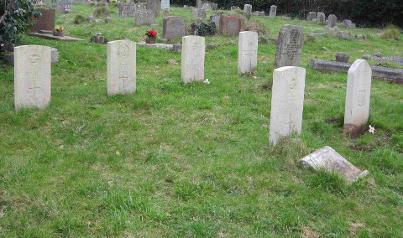
The first cases for infringing the blackout regulations in Ashburton came to court in March 1940. Arthur Leonard Ruth of 24 North Street was fined 5s, and Frank Thomas Livingstone of 22 North Street was fined 4s. The chairman of the bench said that future offences would be dealt with more severely.
Express and Echo 16 March 1940 p5 col6
A milk office was established at the Town Hall by July. Mr W T Lomax was the milk officer.This presumably was in connection with the National Milk Scheme, 'designed to provide milk for those persons most in need of it, on grounds of nutrition, namely, children under five, and expectant and nursing mothers, and its benefits are restricted to such persons.'
Western Times 5 July 1940 p6 col3
Robert Boothby, answering a question on food supplies in the House of Commons, 31 July 1940 https://www.theyworkforyou.com/debates/?id=1940-07-31a.1233.8 - Accessed 5-12-2016
Invasion seemed a very real possibility in 1940, and it was important to slow down the enemy if they reached Britain's shores. One measure taken was to remove road signs, and in July the Western Times was able to report that Ashburton was fully compliant with the regulations regarding road signs.
Western Times 5 July 1940 p6 col3
https://history.blog.gov.uk/2015/06/18/invasion-publicity-during-the-second-world-war/ - Accessed 5-12-2016
In November 1940 the Western Morning News reported that people were getting annoyed at the scaremongering stories of 'havoc' allegedly caused by bombs in mid Devon. Putting the record straight, the paper said that there had been no direct hits on any village in the district, and whilst there were craters in fields, orchards and on the moor, the greatest damage to property had been some smashed windows and a few dislodged roof slates.
Nobody had required hospital treatment, but there were victims when a bomb fell in a field some distance from Druid Farm, Ashburton, occupied by Mr R Daw. On this occasion a fox took advantage of the fact that a sow abandoned her new-born litter and took refuge in a hedge. Apart from these casualties, the only other deaths were 'a few field mice, a frog and numerous rabbits.'
Western Morning News 21 November 1940 p5 col4
The manager explained that people were 'fed up with mutton', and that as a consequence not everybody was buying the amount they were entitled to. Sometimes, he said, he was left with 200-300lb of meat on a Saturday night.Rather than trim a leg of lamb to the rationed amount, and ending up with a pile of waste, he had allowed some customers to have more than they should have.
He also said that the influx of refugees made it difficult to keep up with things.
Prosecuting for the Ministry of Food, Mr Taylor of Paignton said that if a butcher had a larger quantity of meat than he could sell he should inform the meat allocation committee.
The Chairman of the magistrates fined Mr Palk 7s for each of the six customers involved, and three of the customers themselves were also fined 5s: Mrs Violet Sampson of Buckfast; Mrs Ethel Simpson of West End Terrace and Mrs Winnifred Mabel Annesley of the Home Park Hotel.
The summonses against Maj William Rendell of Torns, Mrs Winnifred McKinley of Roseland and Mrs Ada Rowland of Headborough were dismissed.
Exeter and Plymouth Gazette 31 January 1941 p5 col3
'My Grandparents, Mr William Martin and Mrs Beatrice Dorothy Martin moved
into the London Hotel in West Street in 1940.... he and Granny housed
American Army Officers on the top floor during the 40's.'
Many thanks to Christine Lunt for the information above
There were evacuees in the house during the war - my mother used one of the bedrooms as a food store, and had food piled from floor to ceiling. Frankie was a Special Policeman at this time.
From the reminiscences of the late Hugh Abbott
Dutch evacuees were taught in the staff room of the Council School (ie the Primary School).
Remembered by Wendy Major
There was also an evacuee school in the old manor house above Holne Cross (which later burnt down)
Remembered by Wendy Major
"Our house was large – we had 6 bedrooms. F J Badcock had lived in it once, and still owned it. During the war, when we had evacuees, there were 14 in the house altogether".
(From Ernie Smerdon. See Growing up in the 1940s for more on Ernie's childhood)
*******
On the Exeter Memories website Sylvia Hart, who was 9 when WWII began, remembers that the American Army had a camp at Ashburton. The personnel were all black - the white Americans had been separated to camps around Exeter to avoid trouble between them.
http://www.exetermemories.co.uk/em/_story/story_10.php - Accessed 2-01-2016
*******
Edward Fabyan Windeatt of Druid, Ashburton, is listed in a book of remembrance and war record of Mill Hill School. He was a senior company officer of the NFS (National Fire Service) from 1942-45, engaged in the administrative side of the service, particularly disciplinary matters. He was in the part-time fire service from 1938-42, and assisted during the Plymouth Blitz and later at Exeter.
http://lib.militaryarchive.co.uk/library/WWII/library/The-Book-of-Remembrance-and-War-Record-of-Mill-Hill-School-1939-1945/HTML/files/assets/basic-html/page261.html - Accessed 2-01-2016
See also 'The War Years' section of the Wilderness and Greylands School, and the war medals of George Pengilley in the 1940s section of the Virtual Museum.
*******
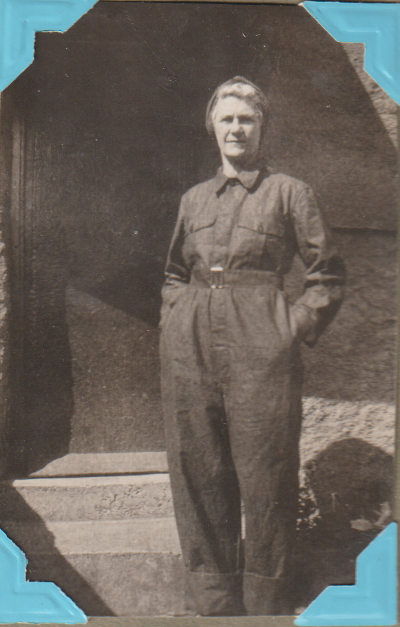
Left and below:
Mrs D A Ferguson was appointed as Group Leader for The Fire Guard Organisation in 1942. Mrs Ferguson lived at 1, Woodland Road, and was leader of Group 20, covering Woodland Road and Whistley Hill.
Documents and photograph are from my own collection
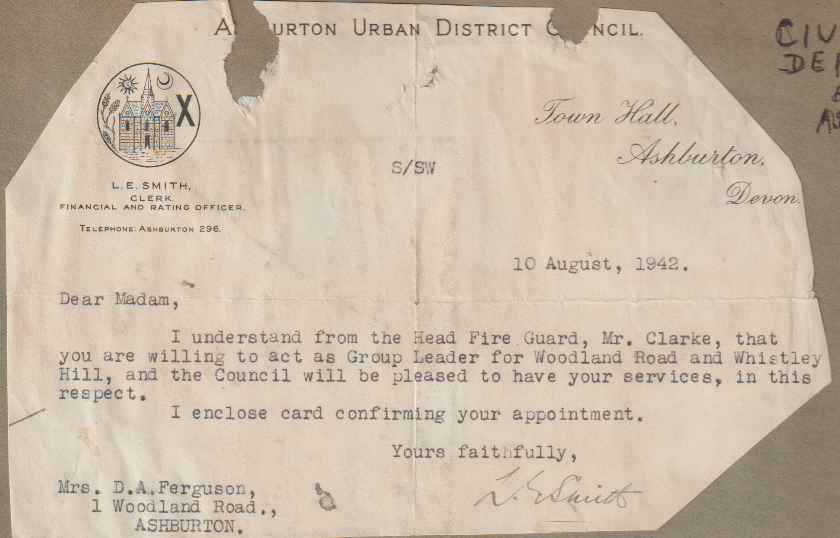
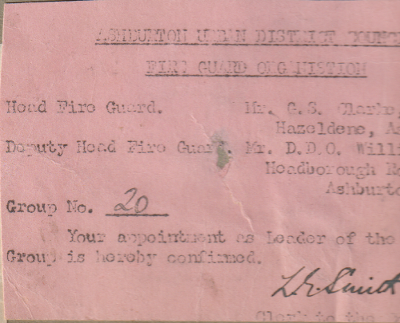
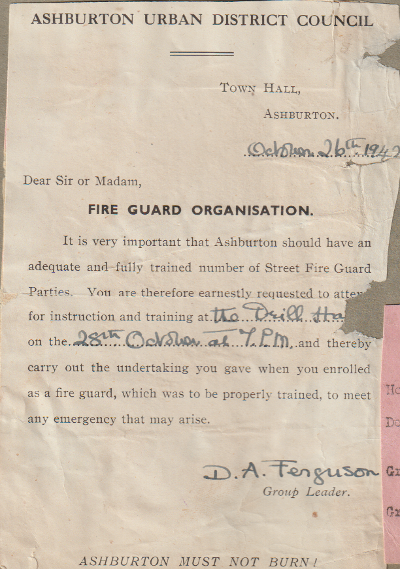
Western Morning News 20 February 1945 p6 col4
*******
The Local Defence Volunteers (later known as the Home Guard) began in Ashburton in 1940.
Col P Lyon and Major E H Varwell were in command.
Western Times 7 June 1940 p7 col3
A procession of the RAF, Home Guard and Civil Defence units, led by a military band, began Ashburton's War Weapons Week.
Western Morning News 26 August 1941 p6 col2
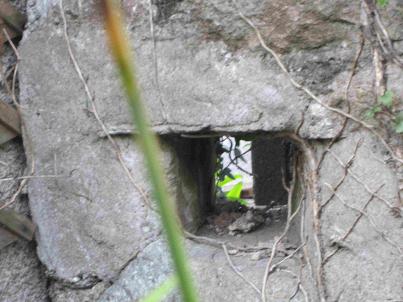
Above : Hole in the wall at the junction of Vealenia Terrace and Whistley Hill
My own photograph 2013
Photo above right. The story goes: The Home Guard were of course prepared to defend Ashburton in case of attack. The idea of the hole above was that men (one man?) behind the wall would aim a weapon through the hole at anyone attempting to enter the town via Whistley Hill.
The Home Guard met in the Drill Hall, Love Lane, for weapons instruction. On one occasion a live cartridge went through the wall of the drill hall and up through several gardens.
They
went up to Rippon Tor on guard duty. This suggests that the Ashburton
troup may have been part of the 14th (Moorland) Battalion.
Some members of the Home Guard: Jack Bligh, George Hole, Charlie Harding, Herbert Hamlyn, Jim and Bill Keats, Stan Gill.
Thanks to Wendy Major and Robin Bligh for the information above. Their father was in the Home Guard.
Exeter and Plymouth Gazette 2 October 1942 p5 col4
The ARP (Air Raid Precautions)
By January 1939 the town had spent 18 months making plans in case of air raids, achieving at one stage 'a better average of volunteers than any town in Devon.' Now Capt S T Stidston had to report that Exeter thought that Ashburton did not require protection. As result Ashburton would not now be allowed a decontamination squad, a repair or demolition party, an ambulance or first aid equipment. No money used for ARP purposes would be refunded from the county rates.
Western Morning News 11 January 1939, p4, col6
Three days later an acerbic reply from Stella Hawke pointed out that an official booklet available for tuppence would have informed the district organizer that it had never been the Government's intention to provide first aid posts, ambulances or decontamination squads for towns of fewer than 3000 inhabitants.
Western Morning News 14 January 1939, p4,col5
According to data originally from Devon Facts and Figures, (part of the Devon County Council website, no longer available)
the population of Ashburton in 1931 was 2505.
Quoted in http://freepages.genealogy.rootsweb.ancestry.com/~footprints1/dev1/ashburton/homepage.htm - Accessed 19-2-2016
A year later, however, Totnes joined the town in a combined exercise at Ashburton. Two motor ambulances and other vehicles came from Totnes; Ashburton personnel included ARP Wardens, Special Constables, Regular and Auxiliary Fire Brigades, St John Ambulance and Nursing Divisions, and the Road Repair Party.
Western Times 31 May 1940, p7, col1
More activities on the Home Front
By the end of September 1939, less than a month after war was declared, a register was taken of all British citizens. In addition to name, age, address and occupation the register also notes any activities helping the war effort. Here are a few Ashburton people and what they were doing on the home front:
Francis W S Abbott at Lyndhurst, Special Constable with Devon Constabulary
Reginald S Andrews at Cross Lanes, Special Constable
George E Browning, North Street area, part time Fireman
Arthur Matthews, North Street, ARP Warden
Montague H Needham, Hele House, Head Warden
Elsie Robinson at Little Barn, Territorial Army Nursing Reserve
Emma M Stidston at Ashe, Warden in the ARP, section 8
Edith E Tuckett at Headborough, WLA (Women's Land Army) on own farm
Mary E Whitley at Welstor, Civil Nursing Reserve
http://search.findmypast.co.uk
In 1940 Ashburton WVS were appealing for aluminium for salvage, which the Council was going to help collect.
Exeter and Plymouth Gazette 12 July 1940 p7 col4
The Housewives Section of the WVS met at Ashburton in 1943. The Group Housewife, Mrs B D Wood, was unable to attend, but the Divisional Head Housewife, Mrs Lucas was present.
The
Women's Voluntary Service for Air Raid Precautions (later the Women's
Voluntary Service for Civil Defence) was formed in 1938. They provided
support, particularly after air raids, in various forms, including
running information centres and mobile canteens, arranging temporary
accommodation for those who had lost their homes, looking after older
people and organizing salvage collections.
The
Housewives Service, intended for those women with other commitments,
involved people volunteering to give emergency aid in their immediate
locality.
Western Times 29 January 1943 p7 col6
http://www.homesweethomefront.co.uk/web_pages/hshf_wvs_pg.htm - Accessed 9-12-2016http://www.royalvoluntaryservice.org.uk/Uploads/Documents/About%20us/WVS_housewives_service_2013.pdf
In
the event of the United Kingdom being invaded, there were highly
secret, trained units ready to resist Nazi occupation. These were called
Auxiliary Units or GHQ Auxiliary Units, and consisted of specially selected civilians with good local knowledge. The training centre was at Coleshill House near Swindon, but the members of the units continued training in sabotage and unarmed combat once they returned home. Operational Bases (hideouts) were constructed - concealed bunkers containing food and ammunition where men could hide, if necessary, for in some cases up to a month. By the end of 1941 there were 534 in use.
http://www.parhamairfieldmuseum.co.uk/BRO.html - Accessed 19-12-2016
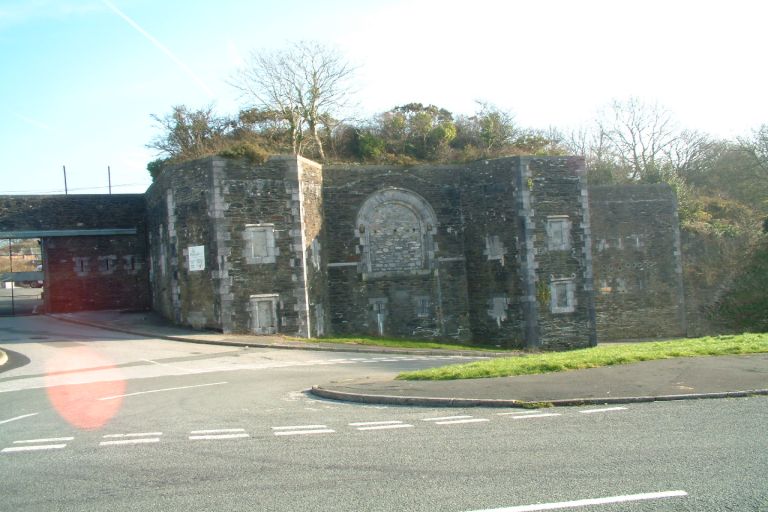
Image distibuted under a Creative Commons Licence via http://www.victorianforts.co.uk
Captain Stuart Edmundsen was put in charge of organizing resistance in Devon and Cornwall, and he began by using Fort Austin in Plymouth as the local headquarters.
'The Last Ditch', David Lampe, Frontline Books, Yorkshire 2013, p87ff (Orignally published 1968)
http://www.plymouth.gov.uk/palmerstonforts
In November 1943 Major Wilfred Welchman 'Bill' Harston took over from Captain Edmundsen as Intelligence Officer in charge of Devon. A headmaster in civilian life, he had previously been an unarmed combat instructor at GHQ Coleshill. He was living at 17 East Street, Ashburton at the time.
http://www.coleshillhouse.com/major-wilfred-welchman-harston.php - Accessed 18-12-2016
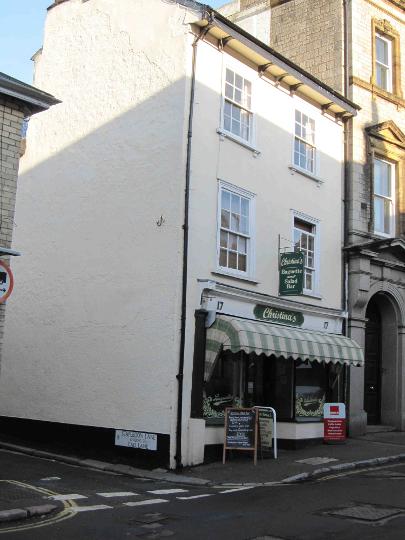
'The Last Ditch', David Lampe, Frontline Books, Yorkshire 2013, p157 (Originally published 1968)
My own photograph 2016
FreeBMD

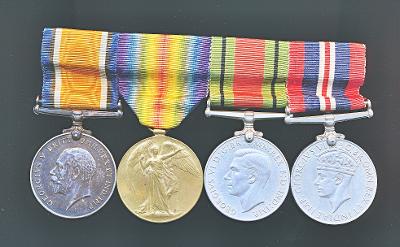
© Great Scott Antiques http://www.greatscottantiques.com. Many thanks to Christopher Scott for permission to use this image
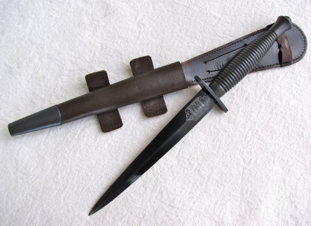
See his website on the Wilkinson F-S Collection at http://www.wilkinsonfscollection.com/wilkinsonfscollection.com/Home.html
Thanks also to Christopher Scott of Great Scott Antiques http://www.greatscottantiques.com
A real life 'Q'
"See Q for any equipment you need" (Casino Royale , Ian Fleming, chapter 3)
In the James Bond books (and more especially the films) there is a fictional Q branch which supplies ingenious gadgets and weapons to assist the spy.
Part of Ian Fleming's inspiration for Q branch may have come from MI9, a War Office department that was set up in 1939 to help British prisoners of war escape from enemy prison camps.
An officer of MI9 is buried in the far section of Ashburton graveyard: Major William Christopher Clayton Hutton
Right: Memorial to Major Clayton Hutton
My own photograph 2013
The memorial reads: 'Christopher William Clayton Hutton Major MI9 1939-45 whose escape devices aided so many prisoners of war.
Died 3rd September 1965 aged 71.'
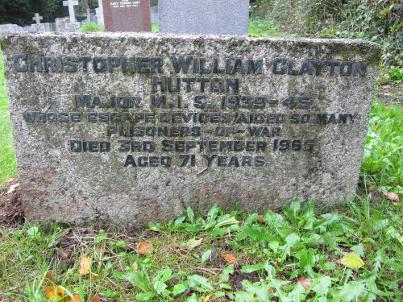
On 9th May 1917, 23 year old Christopher Clayton Hutton, a Captain in the R F C, gained a certificate in flying from the Military School, Birmingham. He was flying a Maurice Farman Biplane. Although the certificate states that he was born on the 16th November 1894, it probably should have read 1893 - his birth was registered earlier that year.* This birth date also appears on documents connected with an application he made for employment in 1944.
http://www.ancestry.co.uk/
*March quarter 1894 King's Norton registration district
http://www.freebmd.org.uk/
In his autobiography Clayton Hutton describes how he was rejected by the RAF at the start of World War II, but after badgering the Army was eventually interviewed by the Intelligence section. He was accepted after talking about his fascination with magic, illusionists and escapologists, and in particular about a challenge that he had once issued to Houdini.
Official Secret, Clayton Hutton, Crown Publishers Inc., New York 1961, pp 1-4.
He was given the task of devising escape aids for personnel finding themselves over enemy lines: items such as saws, wire cutters, maps and compasses. He had no previous plans or records to work from, but there were books written by people involved in previous conflicts.
After bumping into a schoolboy, he had the idea of getting sixth-formers to do the research for him - a co-operative headmaster set pupils the task of making a précis of all passages concerning escape.
ibid pp 9-14
Hutton's first task was to find and design maps that could be used by military personnel in enemy territory. He discovered that silk was the best material to use, because it was durable, could be concealed in small objects and did not rustle. But he had a problem with the ink running. Eventually he found that by adding pectin to the ink the problem was solved.
ibid pp 22-24
In 1942 he put together a 79-page top secret catalogue of devices, 'Per Ardua Libertas' - Liberty Through Adversity. The catalogue was for the use of American intelligence officers, and included coat buttons and gold teeth with hidden compasses and cameras disguised as cigarette lighters
In January 2013 a copy of the catalogue was sold for £5250 at Bonhams Gentleman's Library sale.
http://uk.news.yahoo.com 25 January 2013. Accessed 5-10-2013
In 1944 there was some question of his being employed in the Special Operations Executive - a secret organization set up in 1940 to send spies and saboteurs behind enemy lines.
A note on his records by the Special Branch of the Metropolitan Police states that although '18490' had 'nothing detrimental recorded', they had been informed in 1940 by MI5 that he was employed by MI9.
On the 11th February 1944 his vetting forms were stamped: Not to be employed. MI5 was advised to contact Lt Col Rawlinson 'concerning the above named', and there is reference to a telephone conversation. On the 15th February there is the additional note: Not employed - Owing to traces.
http://www.iwm.org.uk/history/special-operations-executive Accessed 31-10-2013
National Archives ref HS9/7714 CS79725
When he died in 1965, he was living at 5 Foales Court, Stapledon Lane, Ashburton.
Probate records http://www.ancestry.co.uk/
The collar studs need to have the paint scraped off to show the compasses underneath.
The button unscrews to show another.
The swivel [?] bar compass was hanging [?] on a piece of thread and the 2 dots would point north.
The map ... is particularly interesting and is 2 sided.
The other silk one was widely distributed during the war.
This visit to Ashburton has been to see the grave headstone. Mr Trigg is going to make a couple
of small alterations shortly (to change MI6 to MI9
and to alter the spelling of the word YEARS).
'Dear Mr Charnley,
Here are a few of the late Major Clayton Hutton's escape aids which might be of interest to the local museum.
The photographs have a few comments on the back.
The headed notepaper is an actual piece which would have been sent out with parcels to the POW camps. It was a fake fund used as a cover by the senders of the "loaded" parcels.
The lines by Runyan were...' [cont below left]
Many thanks to Bob Heath and to Ashburton Museum
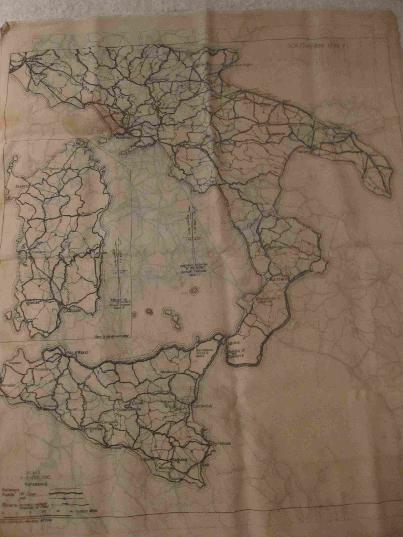
Above: Map of Southern Italy
Below: Detail from map of Southern Italy, showing, amongst other things, that the direction of river flow was marked.
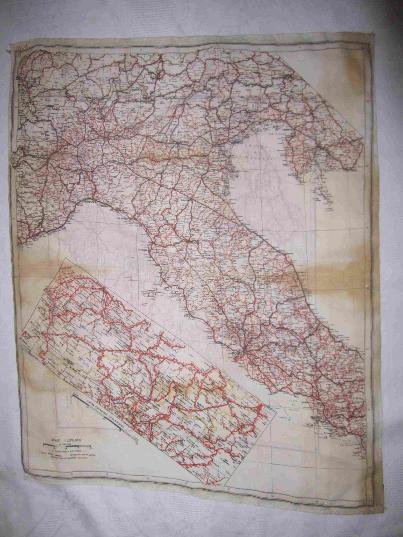
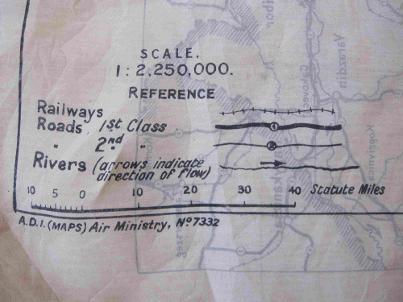
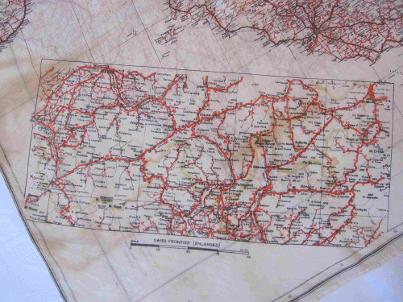
The maps
above were probably used. They belonged to Gunner Hywel Morgan, who was
shot down twice over Italy. On one occasion he lived with partisans in
Italy for five months.
Many thanks to Trish Roberts for the above maps and information.
Thanks also to Sue Coney for her help on this topic
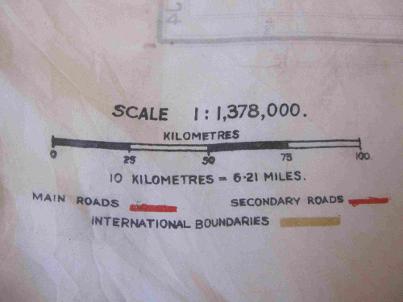
Left: Detail of the map of Italy
Below, left and right: Maps of Spain and Northern Italy.
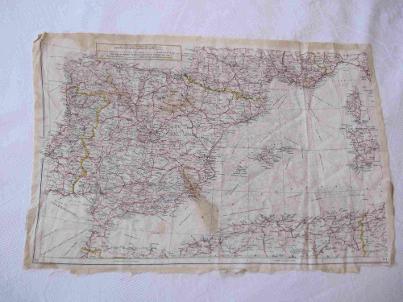
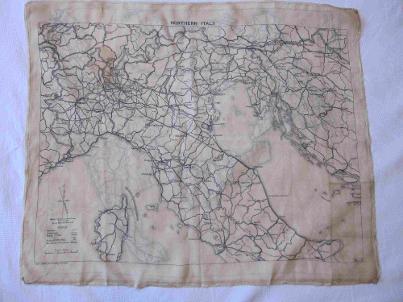
For more information see particularly Edouard Renière's article on escape devices:
https://www.evasioncomete.be Accessed 03-07-2022
See also
The history of British cloth escape maps via http://www.escape-maps.com/escape_maps/ - Accessed 5-10-2013
For more on MI9 go to http://www.arcre.com and search for MI9 History - Accessed 5-10-2013
*******
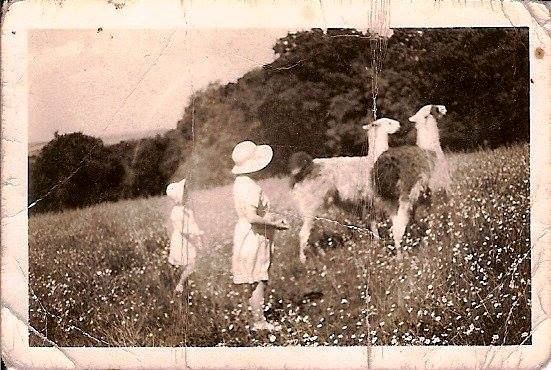
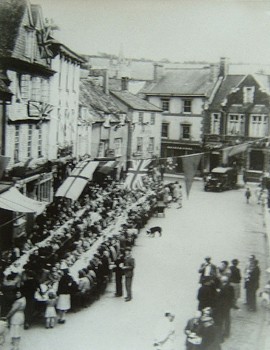
With thanks to WW2 People's War. This is an online archive of wartime memories contributed by members of the public and gathered by the BBC. The archive can be found at bbc.co.uk/ww2peopleswar
Western Times 18 May 1945, p6 col6 and p7 col3
Right: Another picture of the VE celebrations in North Street.
Below: Believed to be a photograph of all those involved in organizing the street party.
Many thanks to Richard and Frances Berry for these photographs.
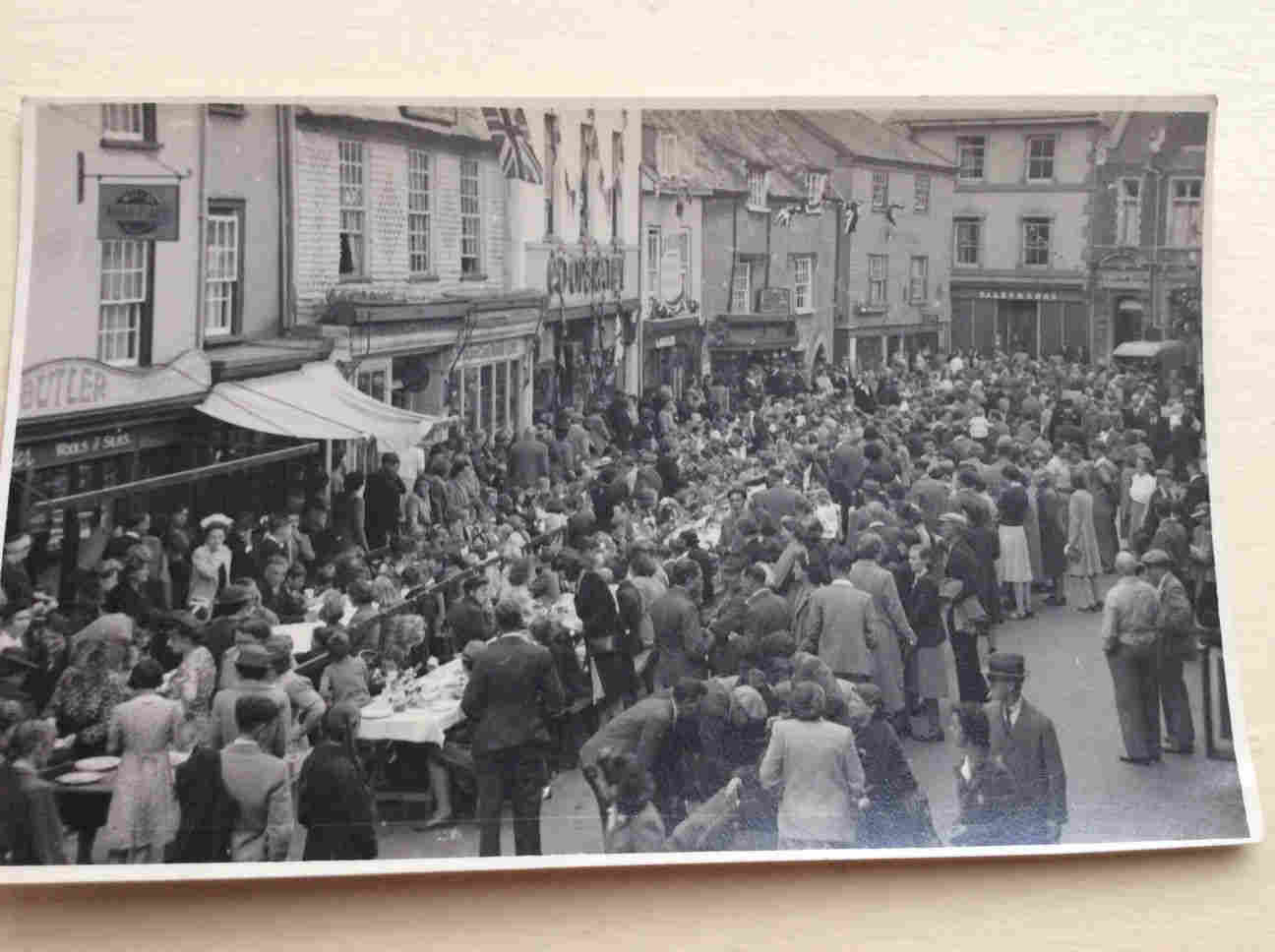
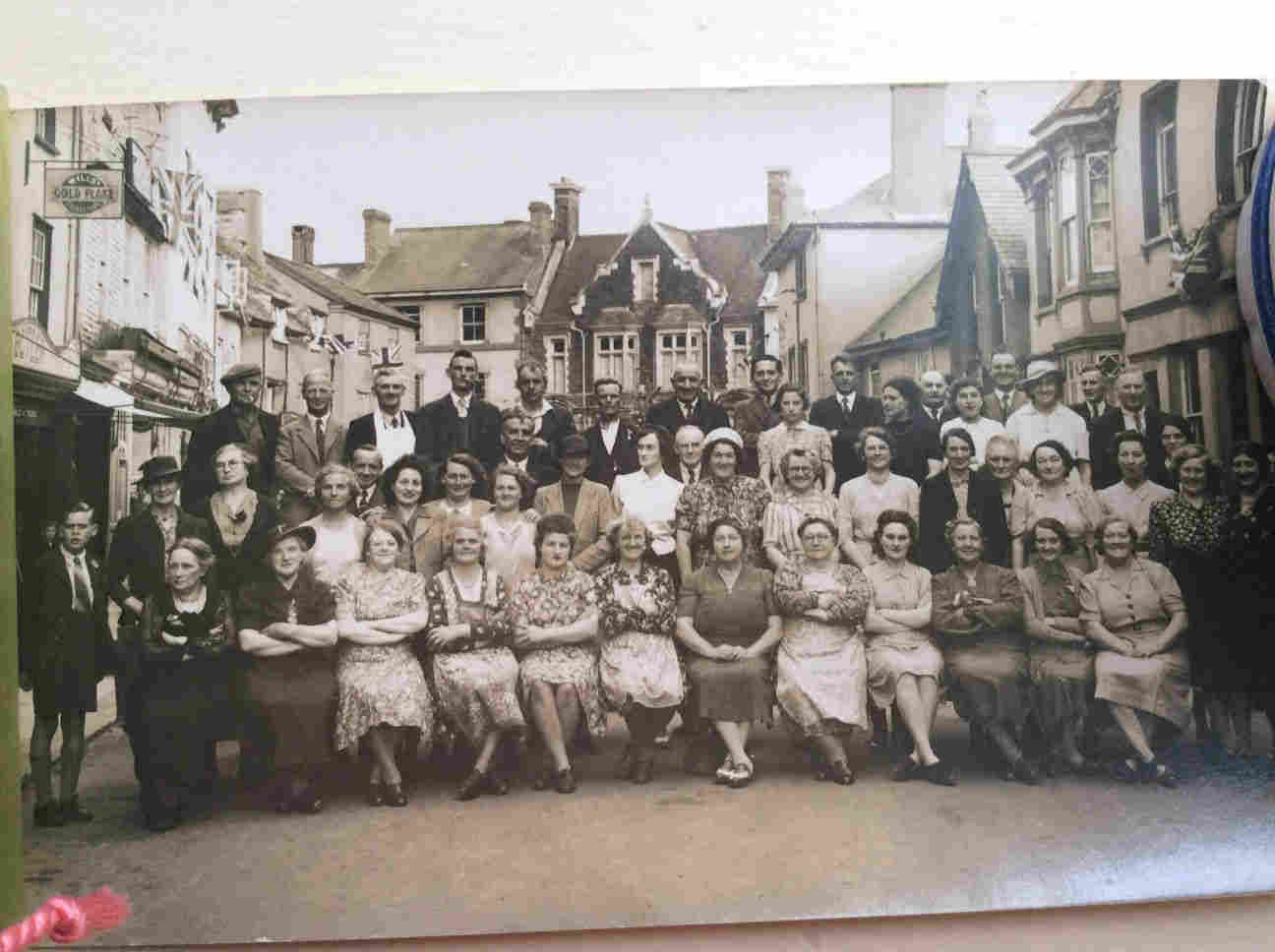
The Amethyst Incident
In
April 1949 HMS Amethyst was making her way up the Yangtse River during
the Chinese civil war. The ship came under heavy fire, the captain was
mortally wounded and there were severe casualties amongst the crew.
Lieut.Com
J S Kerans, who later joined and took over the ship. spoke in Plymouth
about the incident in November. Praising the crew, he picked out the
actions of Teleg. Jack French of Ashburton. When reading signals sent to
Amethyst 'conditions were so appalling that to give him air a shipmate
had to stand over him with bellows.'
Western Morning News 2 November 1949 p5 col6
There
was a procession and civic ceremony when Jack returned to Ashburton. A
car carried him and his parents, Charles and Elsie French to the
Bullring where he was presented with an illuminated address and an
inscribed tobacco jar. Brig. Ralph Rayner, the MP for Totnes, said,
'Well done, old boy.' Other events of the day included a church service,
a tea and a civic ball, where Jack danced with Mary Luscombe, the
carnival queen.
Torbay Express and South Devon Echo 7 November 1949 p3 cols4/5
Continued in column 2
Continued from column 1
Sadly,
the tobacco jar may not have been much use to Jack, because he only
smoked cigarettes. He had posed with a pipe in a picture and orgainizers
of his welcome home thought the jar would be 'an ideal gift.' Mr R G
Robertson, the portreeve, said, 'It's too late to change it now.'
Torbay Express and South Devon Echo 31 October 1949 p5 col4
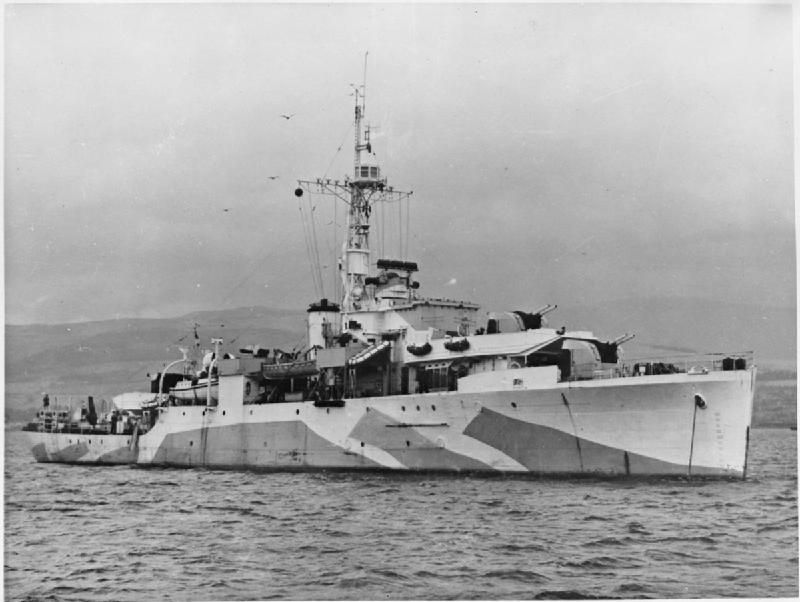
Above: "HMS Amethyst WWII IWM A 30156" by Royal Navy official photographer - This is photograph A 30156 from the collections of the Imperial War Museums. Licensed under Public Domain via Commons - https://commons.wikimedia.org
The British Legion
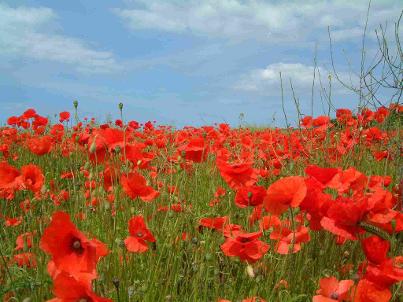
'Several young ladies kindly sold the Flanders poppy on Thursday last....'
Western Times 16 November 1923 p10 col1
The British Legion was founded in 1921
to provide support for ex-servicemen following World War I. Today it has
the aim of providing financial, social and emotional care to past and
present members of the armed forces and their families, and covers
recent and past conflicts. It is perhaps best known for its annual
fundraising Poppy Appeal.
http://branches.britishlegion.org.uk/branches/ashburton
-Accessed 10-11-2013
In February
1924 a south-west conference of the British Legion was held at Exeter.
Ashburton branch said that work at polling stations should be given to
ex-servicemen where possible.
Exeter and Plymouth Gazette 18 February 1924 p7 col3
Mr Bradford, secretary of the Ashburton
branch of the British Legion, organised the Poppy Day collections for
Earl Haig's Fund in 1924. The collectors were the Misses B Adam, F
Campion and N Swain.
Western Times 14 November 1924 p10 col2

Above and below: Oliver Victor Brooks, known as Vic Brooks, with the Devon County Standard.
From Carol Scott nee Brooks:
'My father, Oliver Victor Brooks, was the eldest son of Sgt Oliver Brooks V.C. Born in Windsor in 1919, he was known in and around Ashburton as Vic Brooks.
He met Ashburton girl Pearl Yolland, of 4 Roborough Lane, and they married at St. Andrew's Church in 1941, continuing to live at No.4 afterwards. A former Territorial and Corporal of the Ox and Bucks Light Infantry, he joined the Royal British Legion after the war, and became the Standard Bearer of the Ashburton branch in 1946.
Six feet tall, broad-shouldered and strongly built, he was a smart representative of the Royal British Legion and Standard Bearers.
In due course he became the Devon County Standard Bearer, and won the Southern Counties Competition in Weymouth in 1953.
Vic then went on to win the National Standard Bearers Competition, carrying the National Standard at the Royal Albert Hall on remembrance services on numerous occasions, and also at Sandhurst Military Academy.
In 1958 he returned to Windsor, joining the Windsor and Eton branch of the British Legion.
He died in 1985.'
See also the Fire and flood sub-menu of Ashburton in peril for an account of Vic Brooks in the Fire Service.
Many thanks to Carol Scott nee Brooks for the photographs and information.
*******
